
Iceland is the land of geothermal pools and boreal lights, volcanoes and glaciers. It’s the land of dramatic lava fields that make you think you’re in another world, and green fields where Icelandic horses, cows and sheep graze freely. It is the land of the most beautiful and impressive waterfalls. It is one of the famous locations where countless scenes from Game of Thrones were filmed.
South of the Arctic Circle, Iceland should be on every travel lover’s bucket list, in summer or winter.
Although I was thinking of visiting Iceland in the winter to see the Aurora Borealis, I arrived in this intriguing country a few weeks ago and I enjoyed almost 24 hours a day of continuous light, and some unimaginable sights!
Located on the ever-active geological boundary between North America and Europe, Iceland is a land of vivid contrasts between climate, geography and culture. Four days is certainly not enough to discover all the treasures of this land. However, with a well-planned schedule, you can still reach many of the highlights.
Our accommodation was split as follows – 2 nights in Radisson Blu 1919 Hotel, 1 night at Hotel Skaftafell and 1 night at The New Post Office. I should mention that our accommodation options were quite limited, especially outside of the capital, due to not making reservations until the last minute.
Day 1

We took advantage of the early morning sunshine and spent about 2 hours having breakfast and enjoying the streets, architecture and culture of the small city of Reykjavik (here you have more details). Then we set off for the well-known Golden Circle, which is featured in almost every list of places to see in this country. This route includes Þingvellir National Park, Geysir Hot Springs and Gullfoss Waterfall.
Þingvellir National Park is a site of historical, cultural and geological importance. It was the seat of Iceland’s parliament from 930 until the last session in 1798. The park lies in a rift valley that marks the crest of the Mid-Atlantic Ridge and the boundary between the North American and Eurasian tectonic plates. To the south lies Þingvallavatn, Iceland’s largest natural lake. Þingvellir National Park was established in 1930 and was designated a World Heritage Site in 2004..
To coincide with the route we had set for the day, we chose to take a short hike through the Almannagja Gorge. The place is stunning and you’ll definitely stop every 5 minutes for another photo, especially, as the gorge was the filming location for the HBO series Game of Thrones, for the road to Eyrie and where Arya Stark and Sandor Clegane traveled through the Riverlands. And, if you follow the trail, you can’t miss the gorgeous waterfall called Oxararfoss.
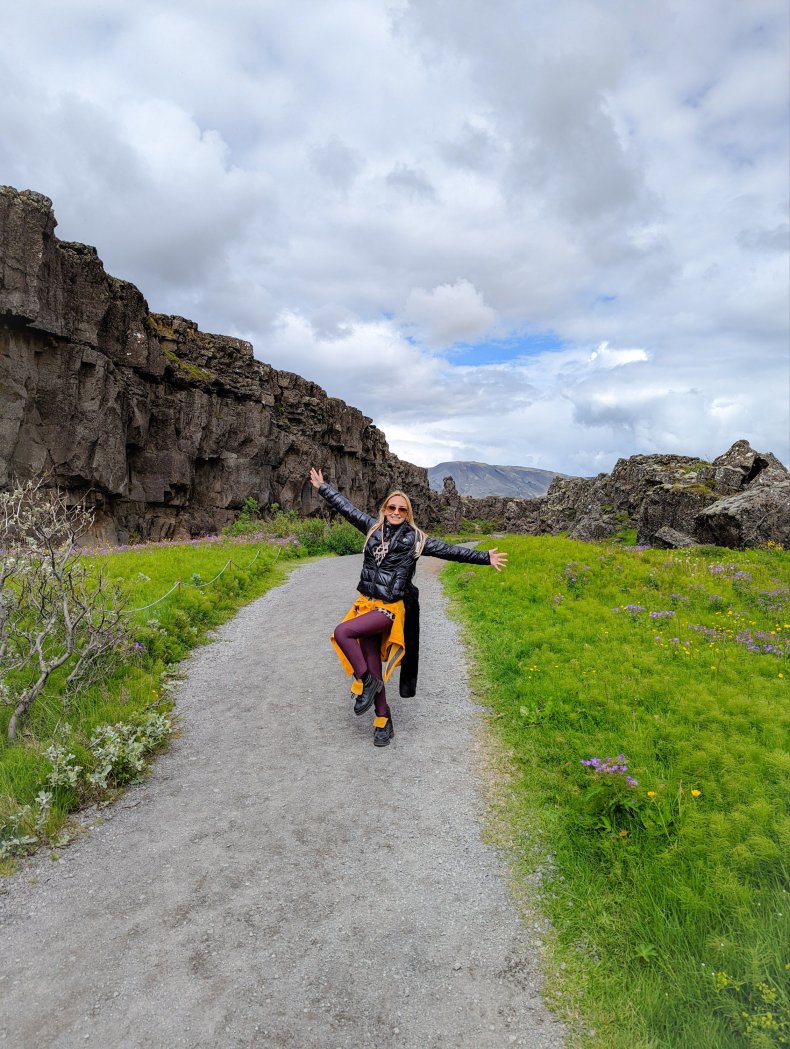

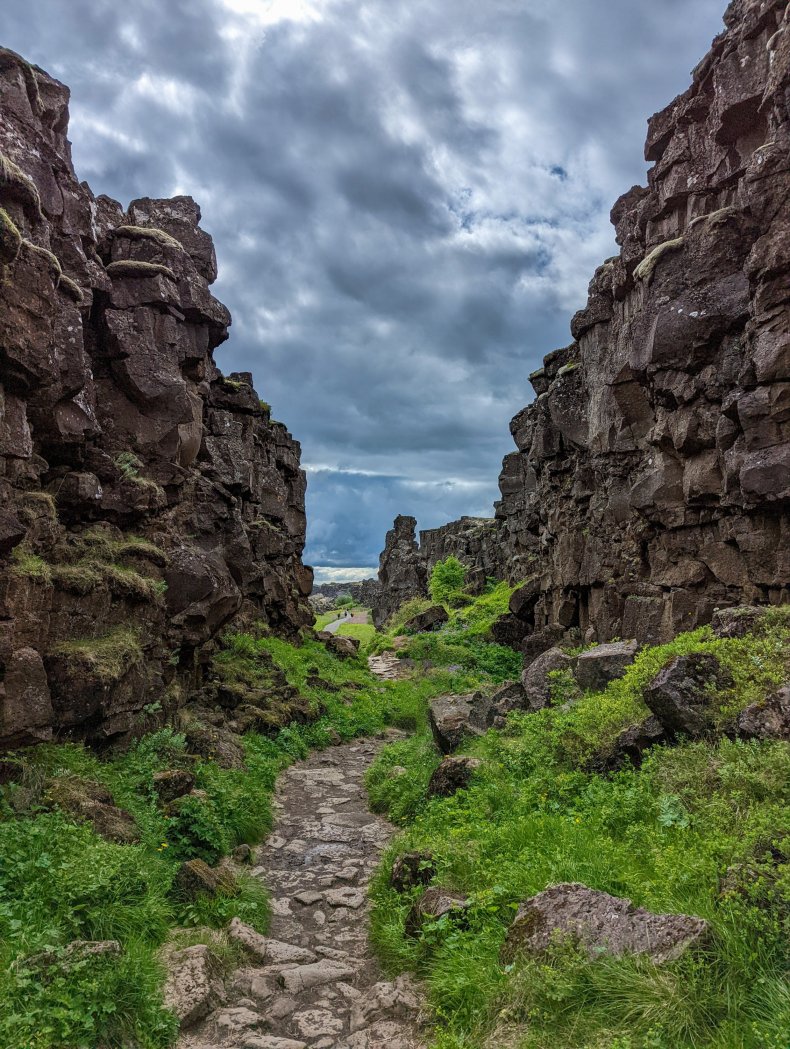
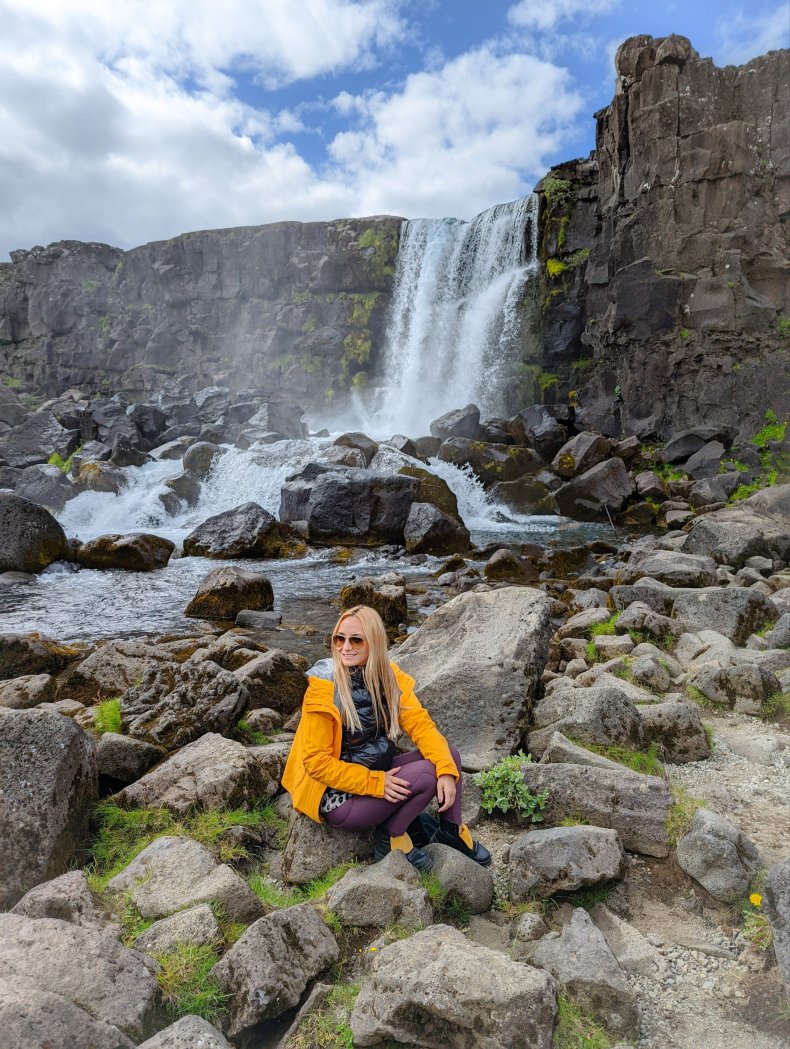
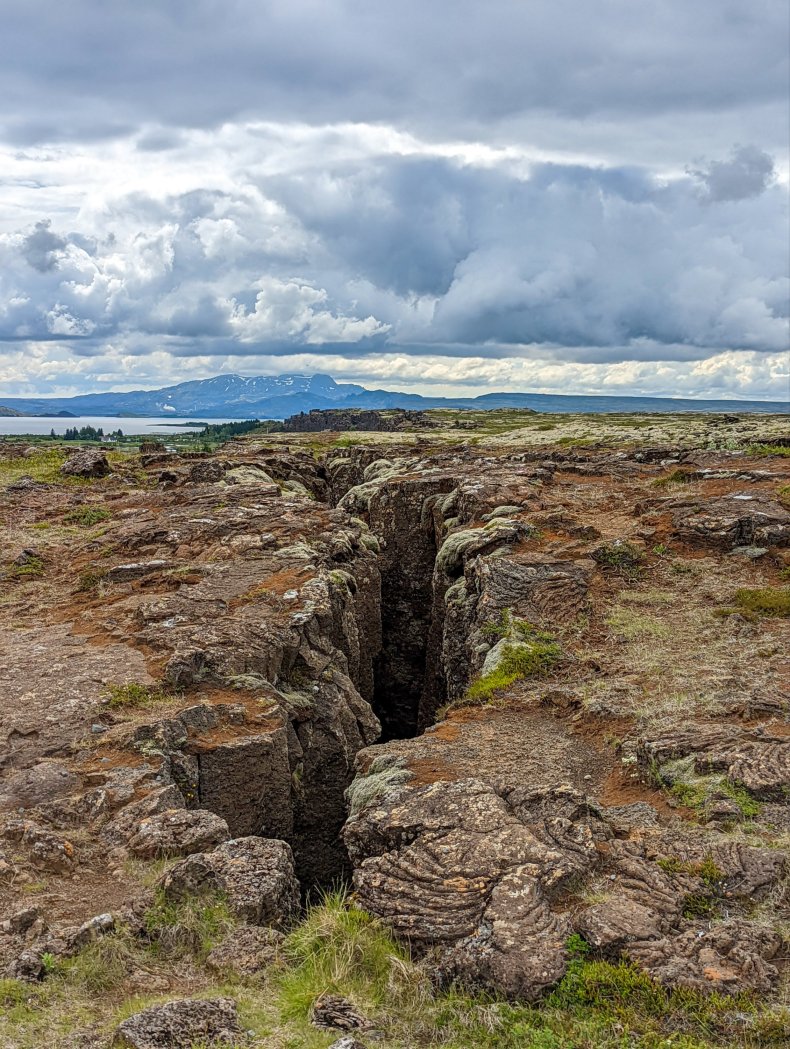

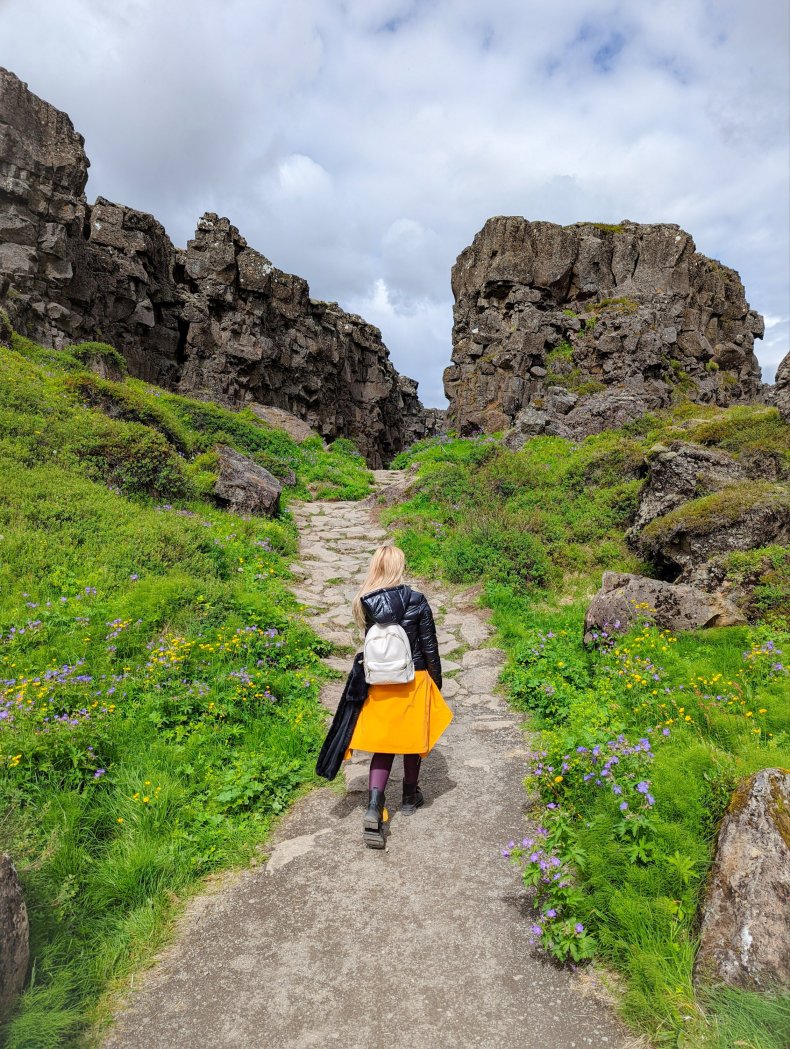
If you’re not in a hurry, you can also either snorkel/scuba dive in Silfra, a strip between the two tectonic plates, filled with crystal clear glacial water that comes out of a spring, or take a ride on Icelandic horses..
The second stop was Geysir Hot Springs, to see the area’s boiling mud pits and exploding geysers. The famous Strokkur erupts every six to ten minutes, spewing water 20 to 40 meters into the air. We didn’t linger here too long as we’ve seen this phenomenon in the Azores, and now our time was very limited and we wanted to see as many places as possible. That’s why lunch consisted of a sandwich bought from the restaurant in this area.
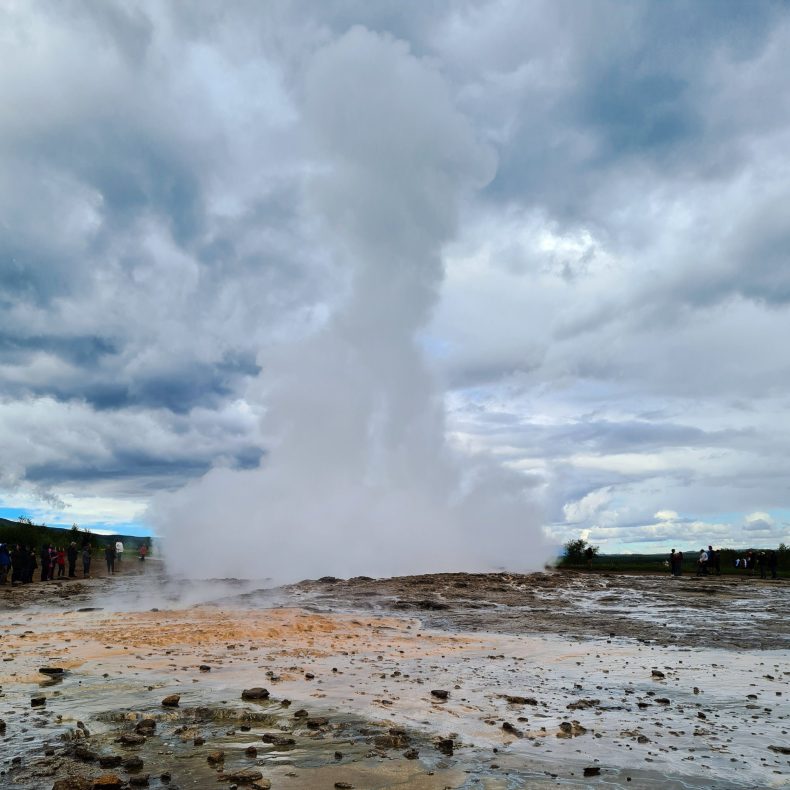
The third stop was Gullfoss waterfall, which is not only Iceland’s most famous waterfall, but also one of the most impressive, thanks to its two-tiered waterfall that plummets a total height of 31 meters. Gullfoss actually means “Golden Waterfall” in Icelandic, and there are a number of theories behind its name. Some say it was named for the golden light that reflects off its waters at sunset, others say it was inspired by the rainbow created by the sun hitting the water spray.
The photo opportunities here are incredible, and you could spend a long time marveling at the impressive power of the water.

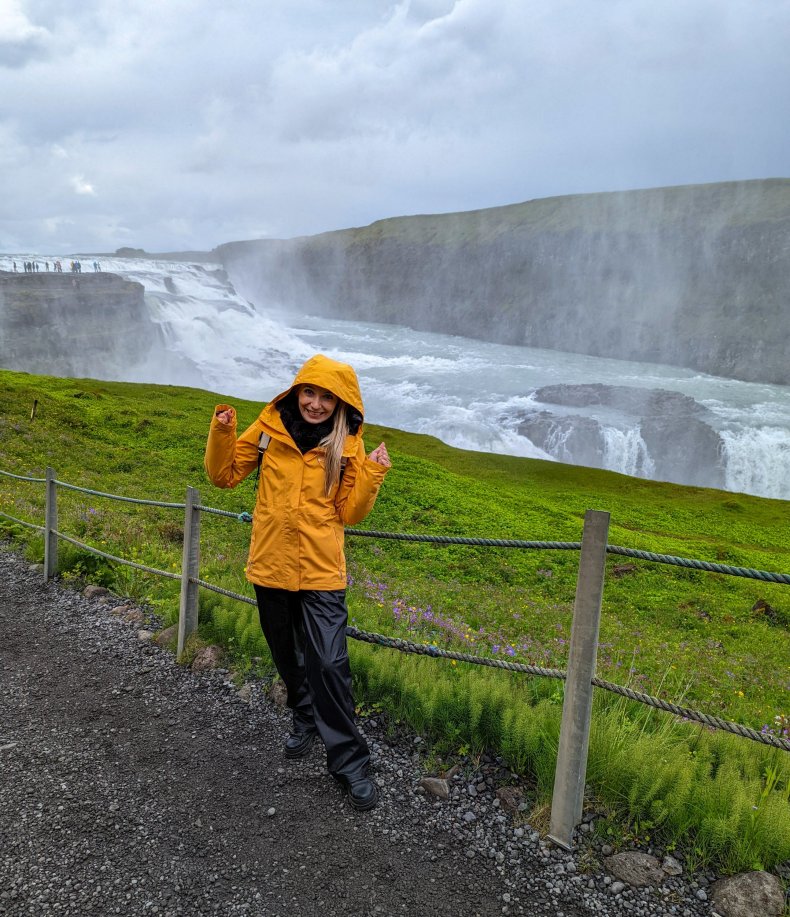
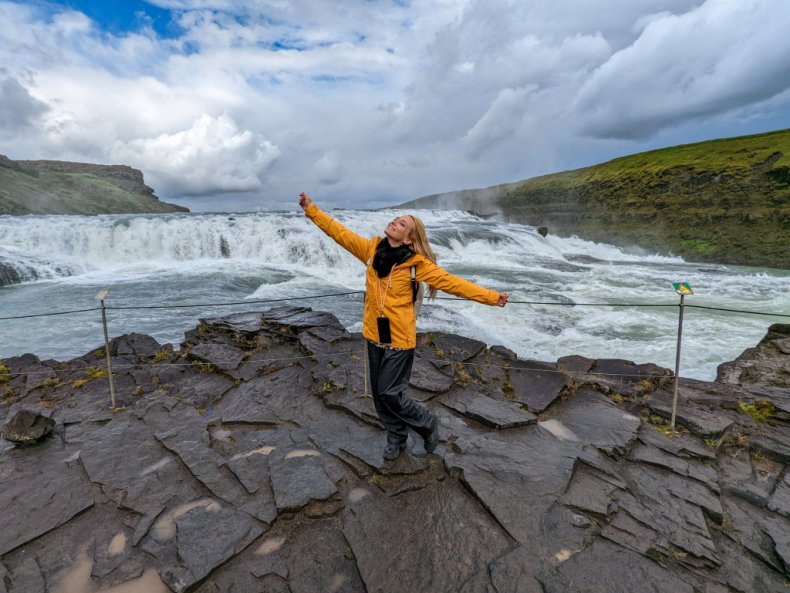
The Golden Circle itinerary is an easy and efficient way to see three of Iceland’s top attractions in half a day, whether you take a group tour or opt for a Golden Circle tour by private car. Each stop offers insight into Iceland’s geological history, not to mention excellent photo opportunities. If you don’t want to rent a car there are numerous day trips that offer exactly this route (more details here).
For those who prefer a less busy schedule of activities, the day can end here, but we continued with an Instagrammable stop at Kerid Crater (the only place we paid admission) which is about three thousand years old. This is the main reason why the slopes of Kerið are red rather than volcanic black. The purple rocks contrast dramatically with their surroundings, especially with the intense azure of the lake and the green of the vegetation. The reason the lake is so vividly coloured is due to the minerals in the rocks, which seep in and color the water the aquamarine color for which it is famous. Regardless of the geological minutiae that led to the lake’s creation, its brilliant rainbow of colors looks otherworldly.


Driving from one side of the country to the other you can’t help but encounter many different places and sights that are not of this world. Don’t forget to stop when you find a small parking space to pet the Icelandic horses. You’ll be surprised by their gentleness and beauty!
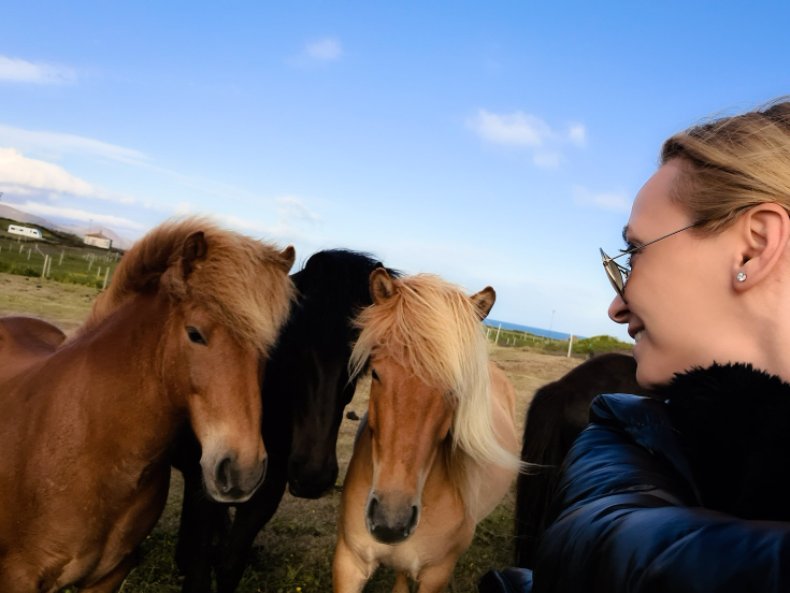


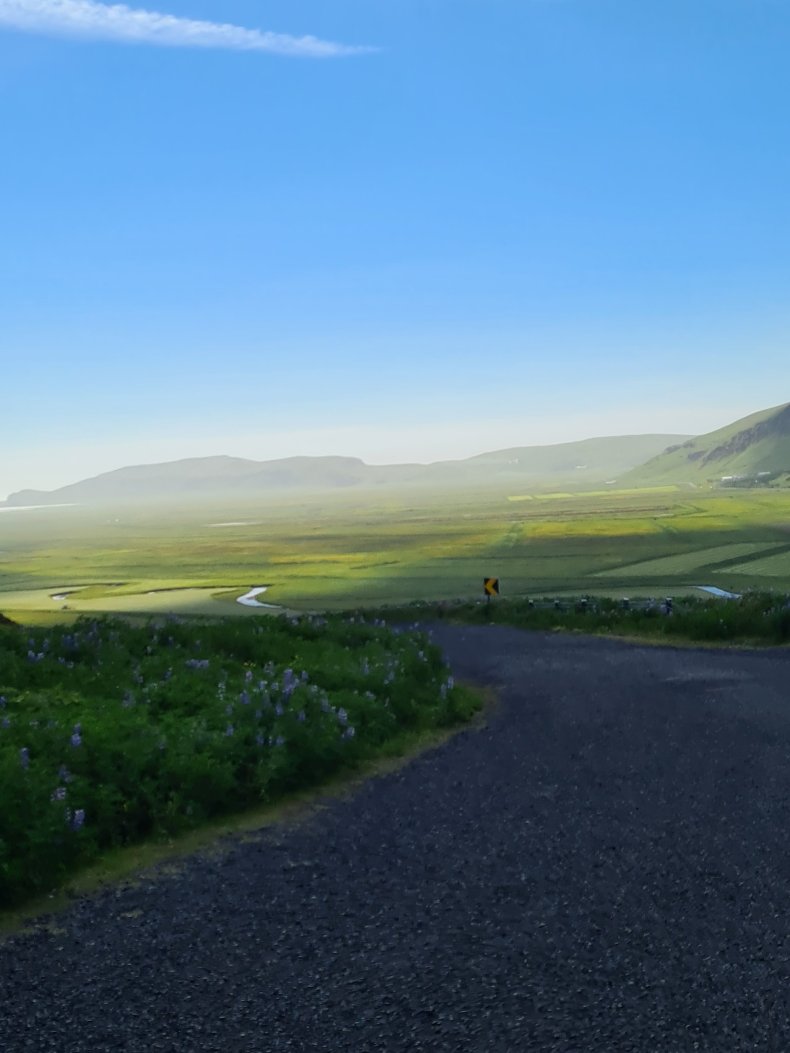
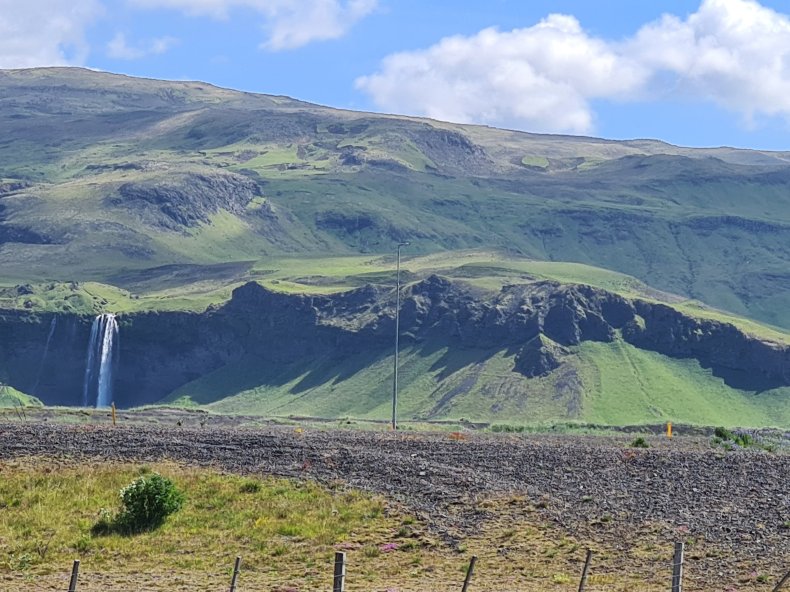
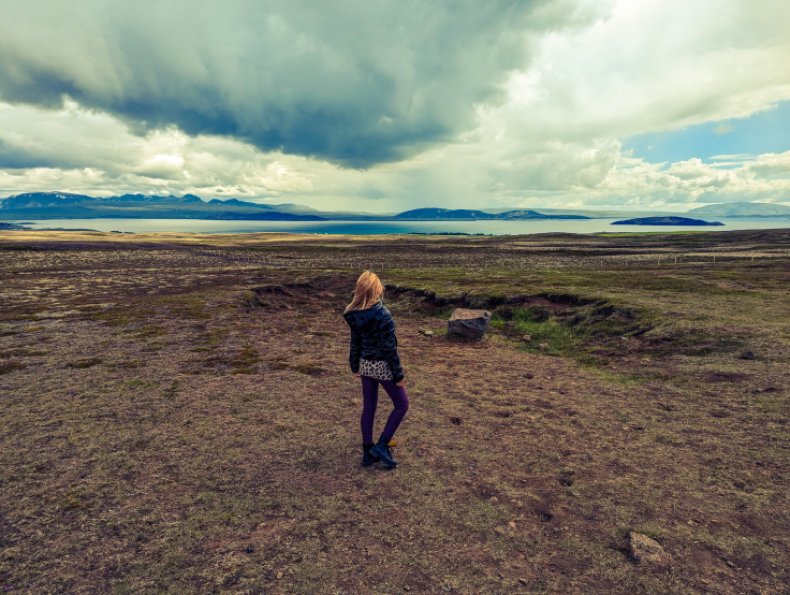
The last stop of the day was Blue Lagoon. The perfect place for some well-deserved relaxation after a busy day. Before entering the pool we decided to have dinner at the restaurant in the resort, as we were afraid we might not find anything open when we returned to Reykjavik.
Initially, when we only found tickets for 9pm, I was a little disappointed, thinking it would be too late to fully enjoy the experience. However, that was not the case! To my surprise, it hardly gets dark at all during this time, and so we had time to explore everything we wanted to, as well as relax at the end of the day. Anyway, I recommend buying your tickets in advance. And, yes, as you’ve probably heard before, entry is not cheap, especially in high season. If you’re not prepared to sacrifice at least 80 euros for an hour of relaxation, then you can enjoy other hot springs such as Reykjadalur Hot Spring Thermal River or Seljavallalaug Swimming Pool.
Coming back to the Blue Lagoon, this place is fabulous! Set on volcanic terrain it was formed around 1226 and is now the largest man-made geothermal complex in the world. The milky blue colour of the water is due to the way the silica in the water reflects light. The water is so warm (38°C) you don’t even feel how cold it is outside. For complete relaxation, the comfort package includes a drink from the water bar and a silica mask, which will leave your skin super soft.


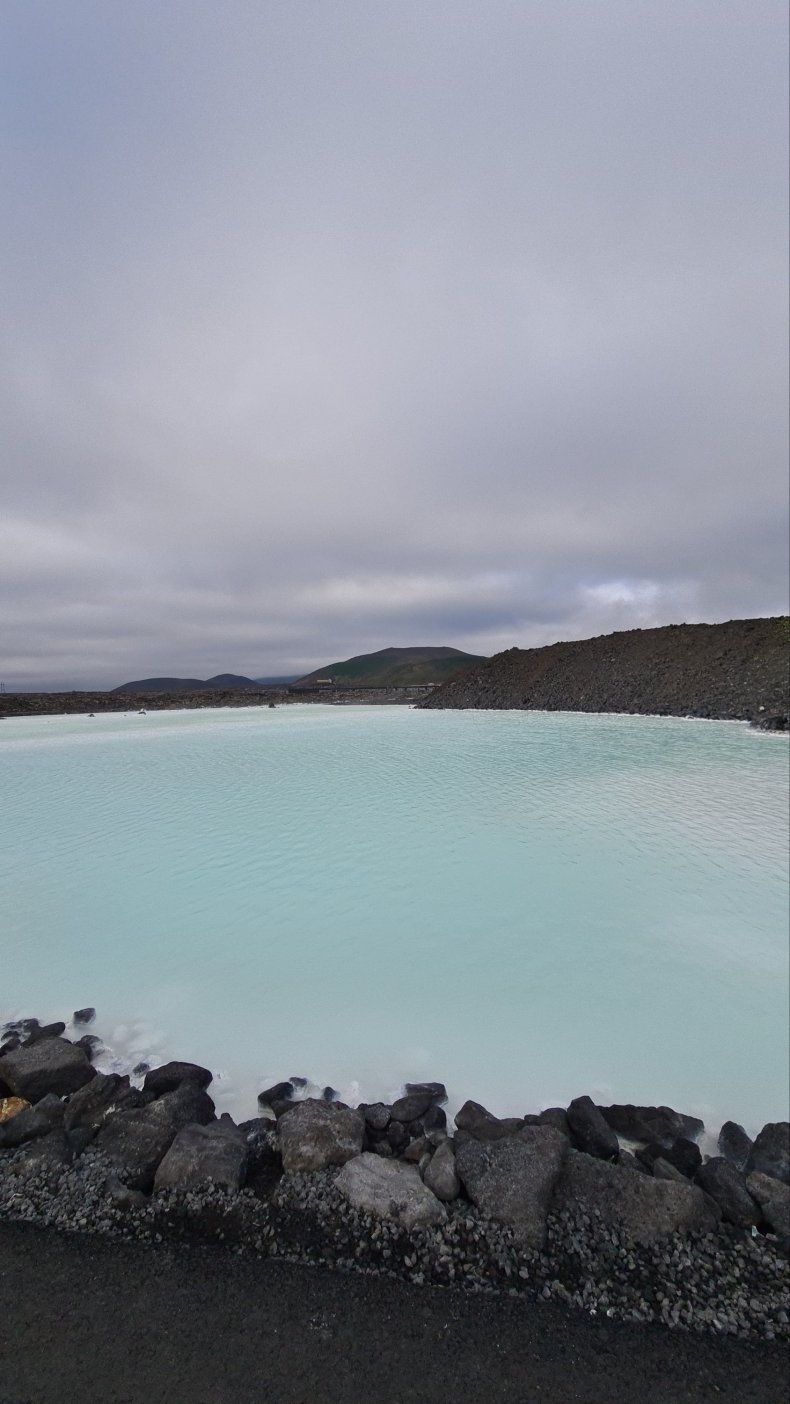
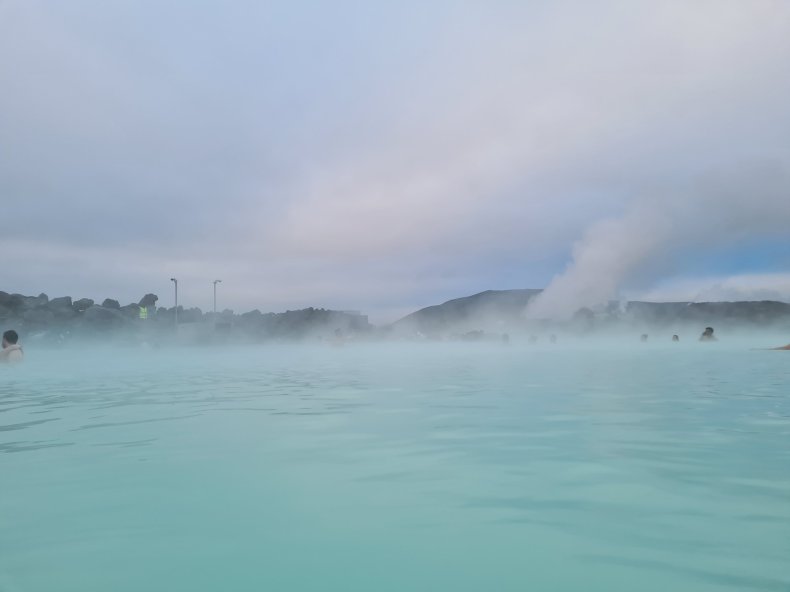
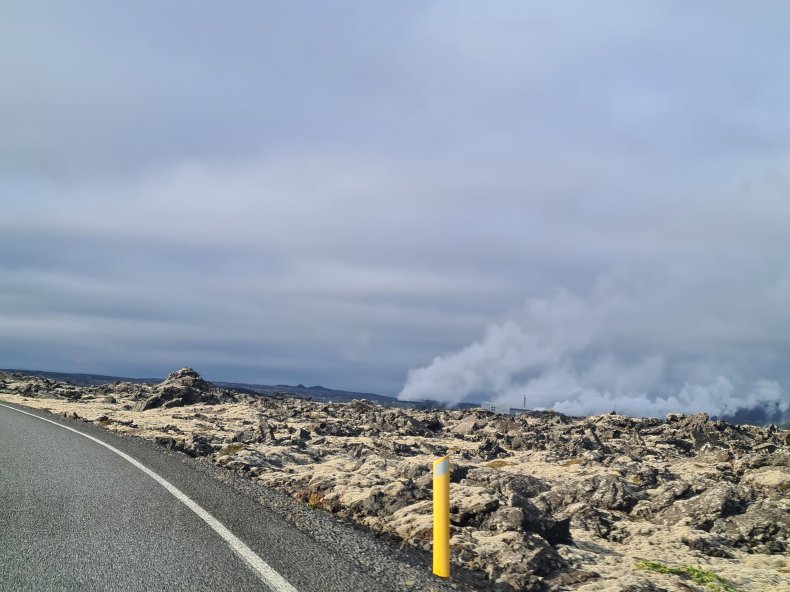
Day 2

The second day awaited us with an even longer route than the first day. So we set off after breakfast at Baka Baka to recharge our energy for the day.
Our first stop was at the amazing Skógafoss waterfall, which is unique as it comes directly from two glaciers, Eyjafjallajokull and Myrdalsjokull. Being 60 meters high, the waterfall is impressive. If you’re in good physical shape, you can climb the 370 steps to the top of the waterfall and be rewarded with a beautiful view of Iceland’s southern coast.
Due to the amount of water spray the waterfall constantly produces, a single or even double rainbow is visible on sunny days.



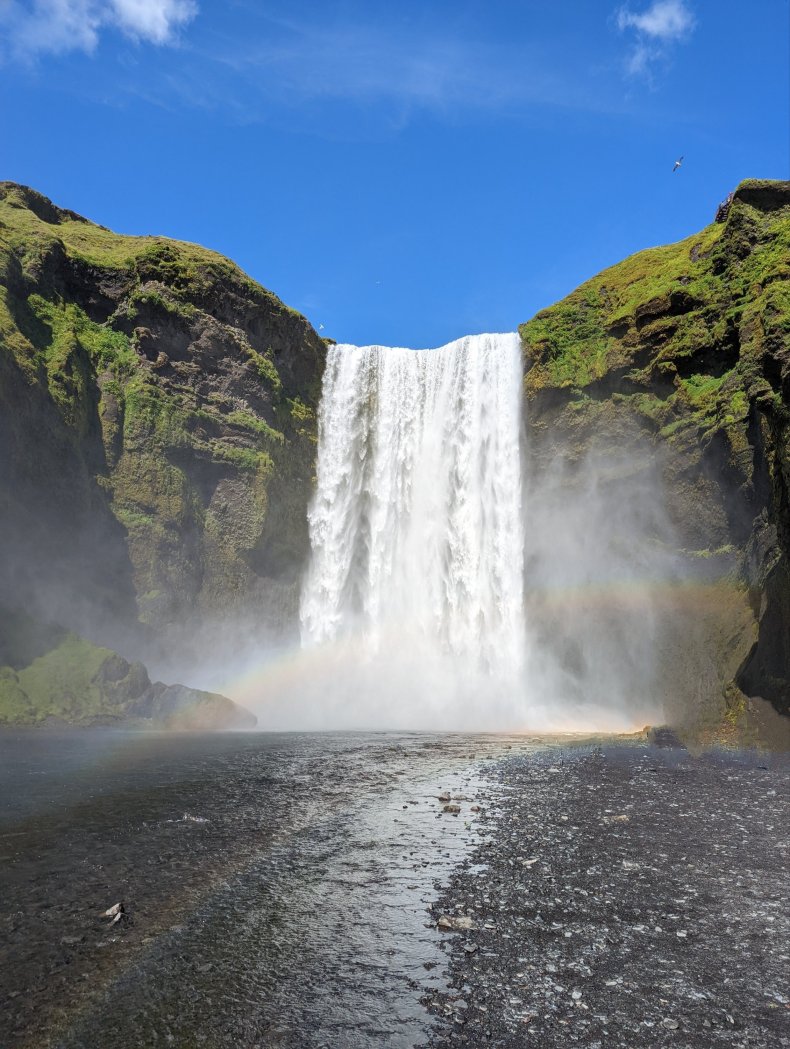
After taking countless photos, we continued our route and stopped at the famous Reynisfjara beach. With its huge basalt cliffs, stormy Atlantic waves and stunning views, Reynisfjara is considered to be the most beautiful black sand beach in Iceland. In 1991, National Geographic voted Reynisfjara as one of the 10 best non-tropical beaches to visit on the planet. It’s important to note that the waves here are particularly violent, also called “sneaker waves” can occur when you least expect it. Visitors are advised never to turn their back to the waves and to keep a safe distance of at least 30 meters.
From the beach you can see the Reynisdrangar poles, which are said to be petrified trolls that were caught out at sunrise and frozen in time.
Also along the beach is the stunning Hálsanefshellir sea cave and Gardar Rock, which is composed of dark basalt columns that some say resemble a pyramid or organ pipes.
The beach appears in season 7 of Game of Thrones as the filming location for Eastwatch-by-the-sea where Jon Snow lands before venturing north
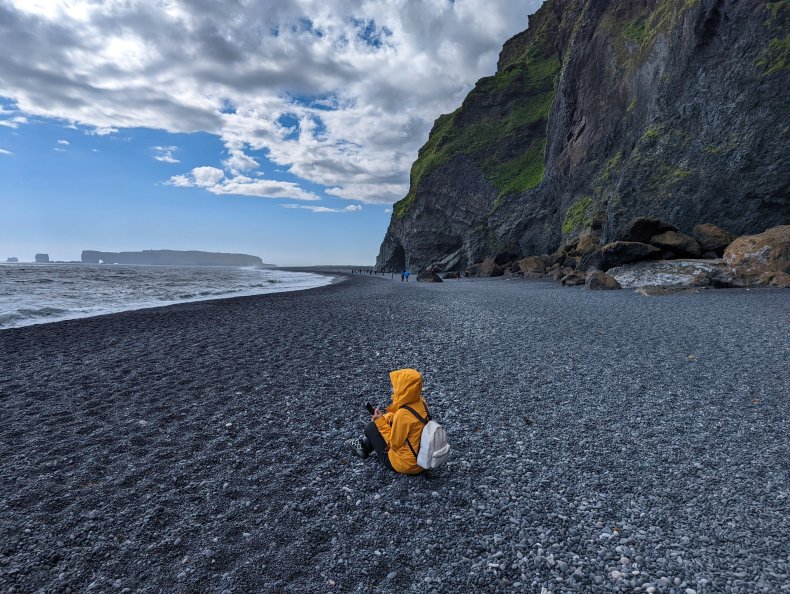

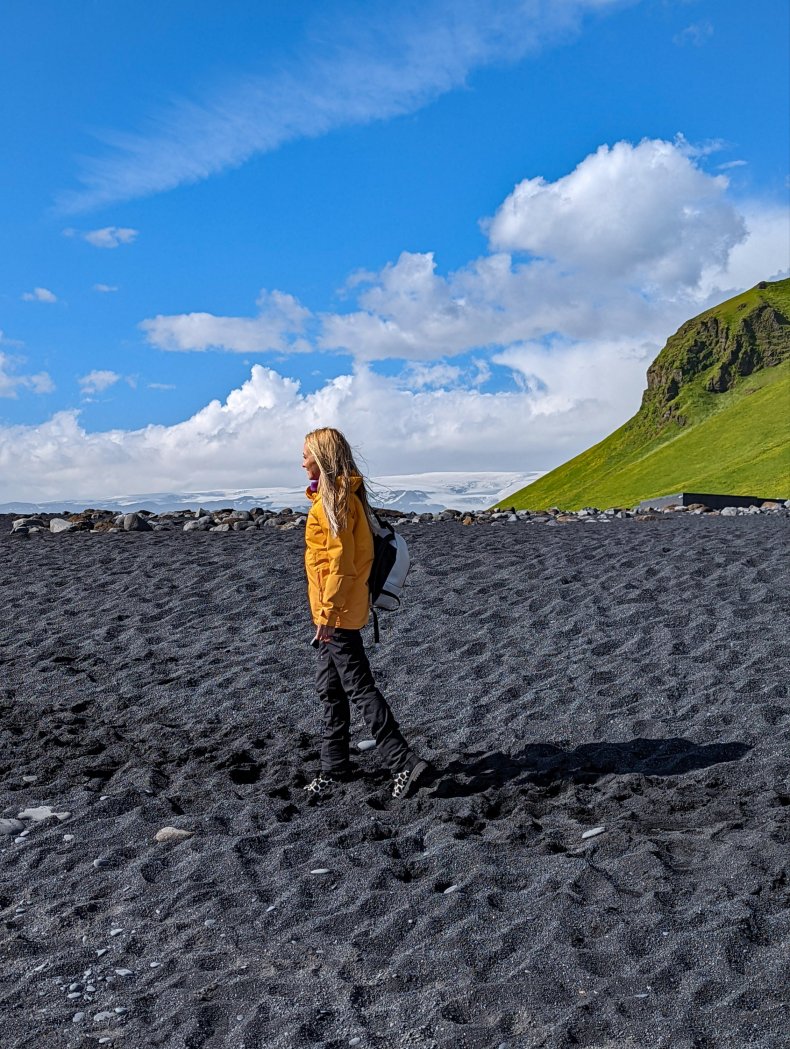
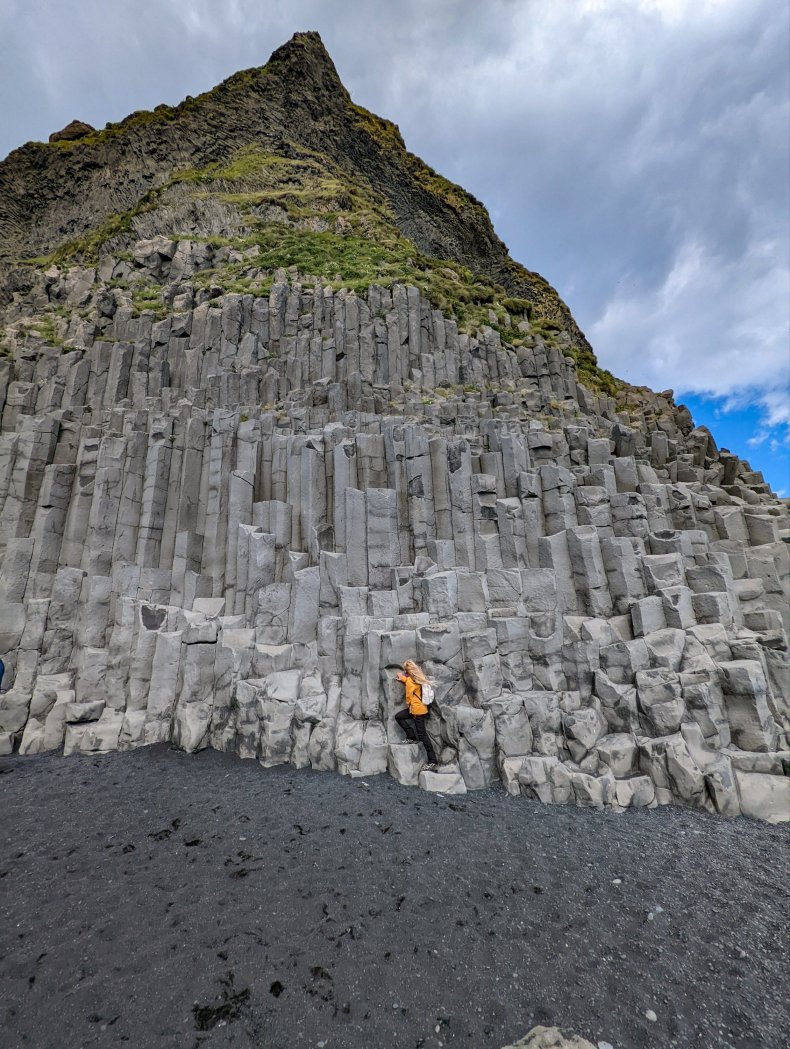
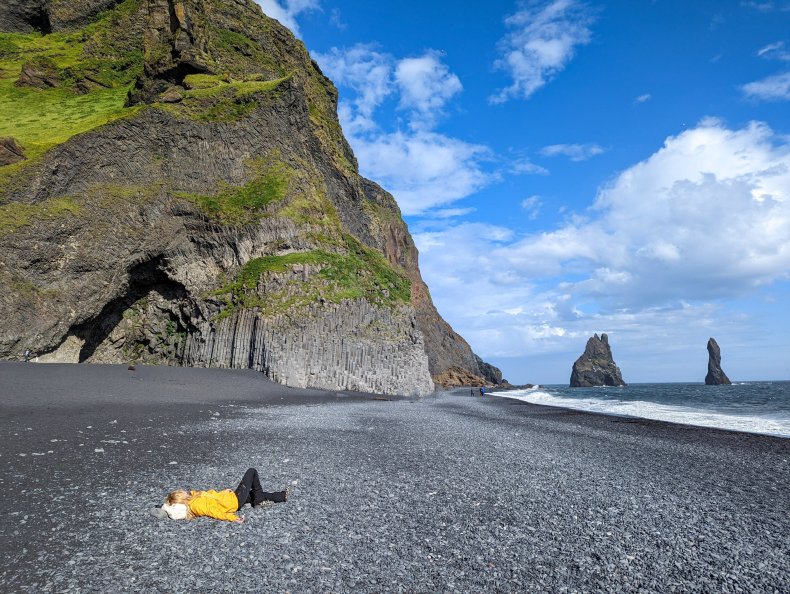
Located right next to the main car park, the Black Beach restaurant can be a quick option for lunch.
After this moment of relaxation and delight, we arrived at another magnificent spot, Fjarðarárgljúfur Canyon. It was formed during the last ice age, when a glacial river carved its way through, creating a massive canyon about 100 meters deep. In summer, the water level is low, so the canyon can be safely visited on foot through the riverbed. We chose to see it from above and drove up to the Fjarðarárgljúfur Viewpoint. Beware, however, that there is a small stretch of road classified as category F. This means that cars without 4WD are not allowed on these roads especially in bad weather. We did however, as the weather was good and there were other cars in the same situation. I can say that Fjaðrárgljúfur looks like a fairy tale and the view it offered charged me with incredible energy! It is definitely a place not to be missed!
And for Game of Thrones fans I should mention that Fjaðrárgljúfur appears in the dragon flight scene in the first episode of season 8, when Jon and Daenerys fly with the dragons for the first time. After flying through the canyon, they land at Skogafoss.
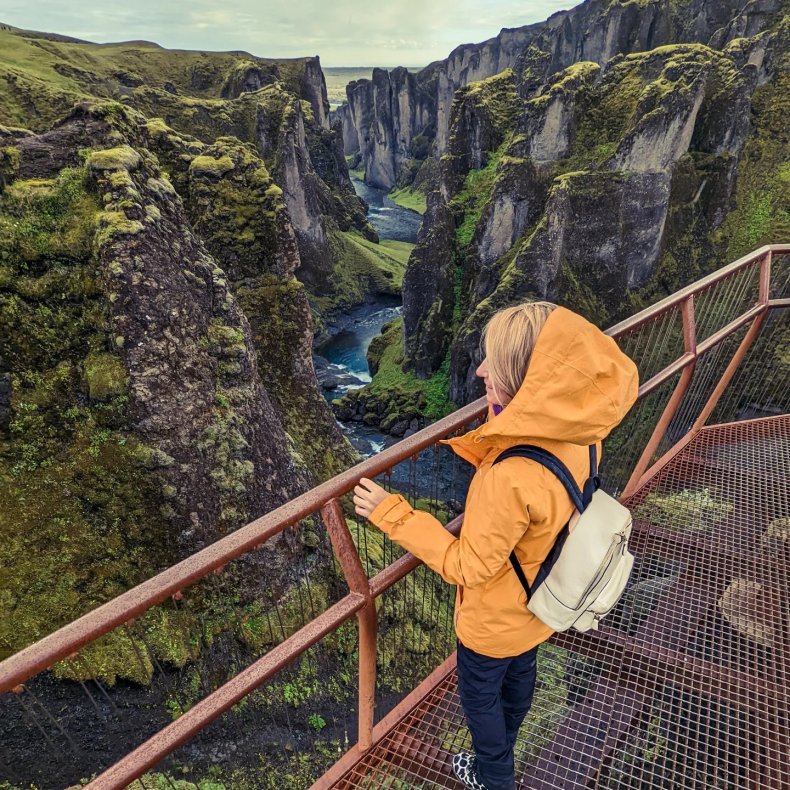
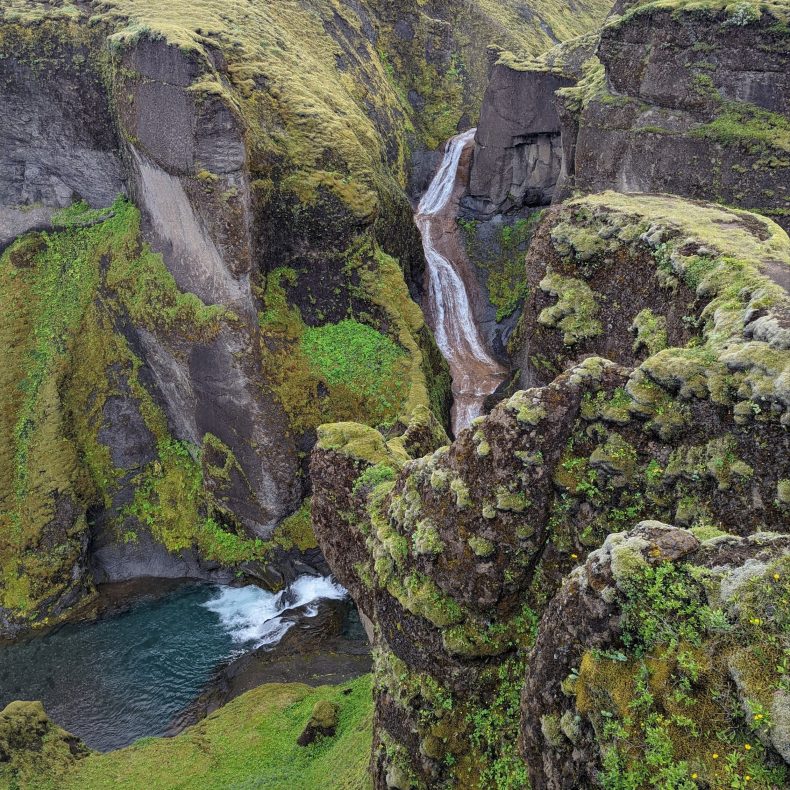
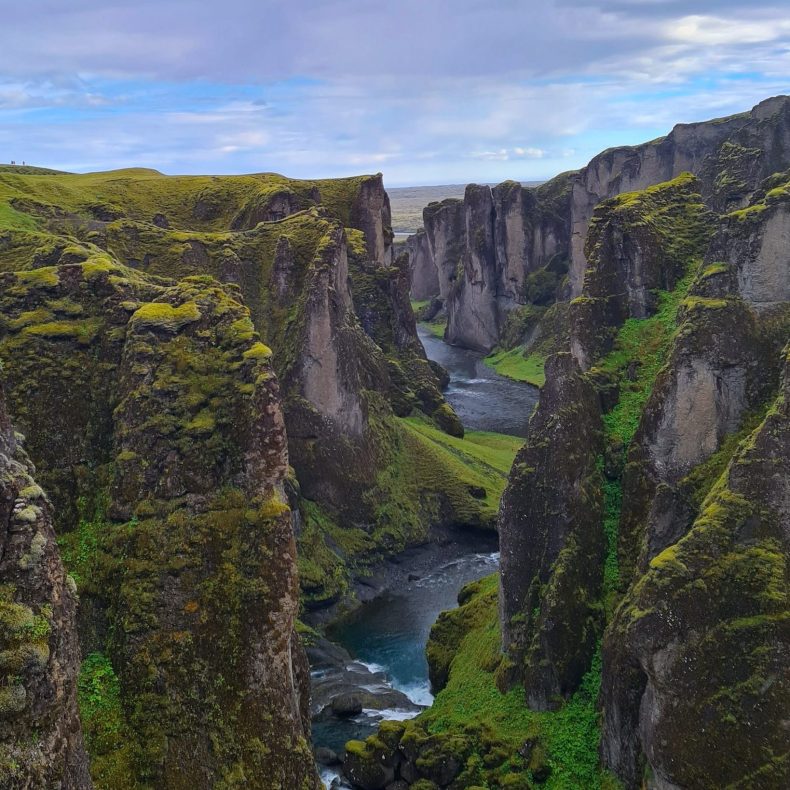
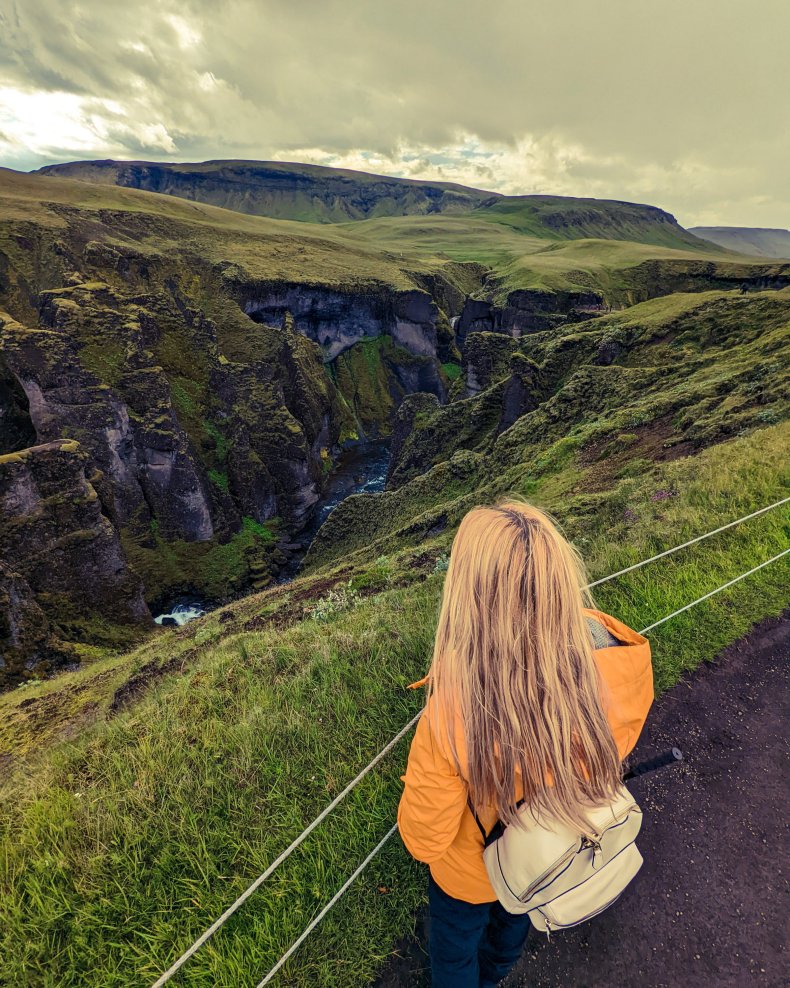
Energized, we headed to the Svartifoss waterfall, which was just a few minutes from our hotel. But, as human settlements in this part of the country are rather sparse, we realized we had to get to the hotel first to catch the restaurant open.
Having satisfied our hunger we took advantage of the light outside, even though it was after 10pm, and headed, on foot, to the Svínafellsjökull glacier, just minutes from the hotel. It’s an outlet glacier of Vatnajökull, the largest ice cap in Europe. It is one of the most popular places in the country for glacier hiking, thanks to its incredible formations and excellent views. But I’ll leave the pictures to tell you about my first experience with a glacier.

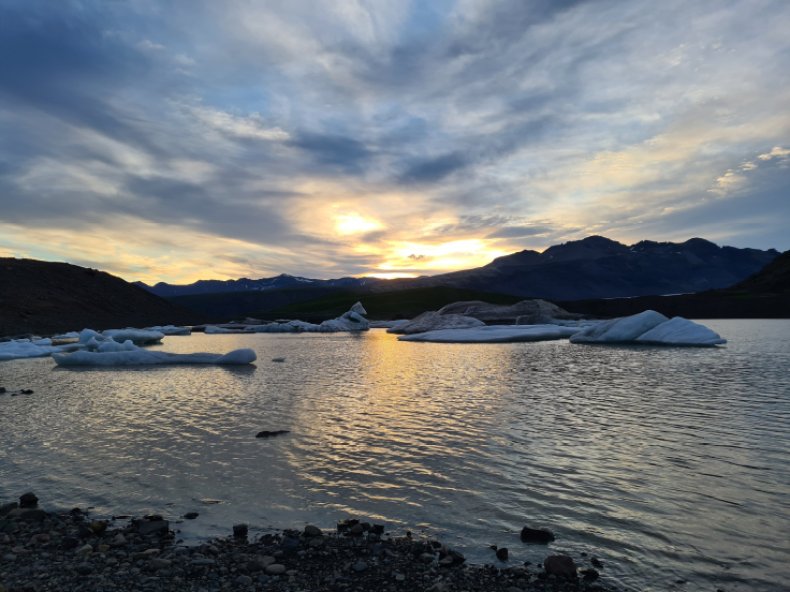


Day 3

Day 3 was supposed to start at 9.30am with a boat tour in the Jokulsarlon glacial lagoon, but due to very strong winds the trip was canceled. We did, however, manage to have a wonderful experience watching the floating glaciers with their amazing colors from the shore and eyeing some playful seals! (you can find here other activities).
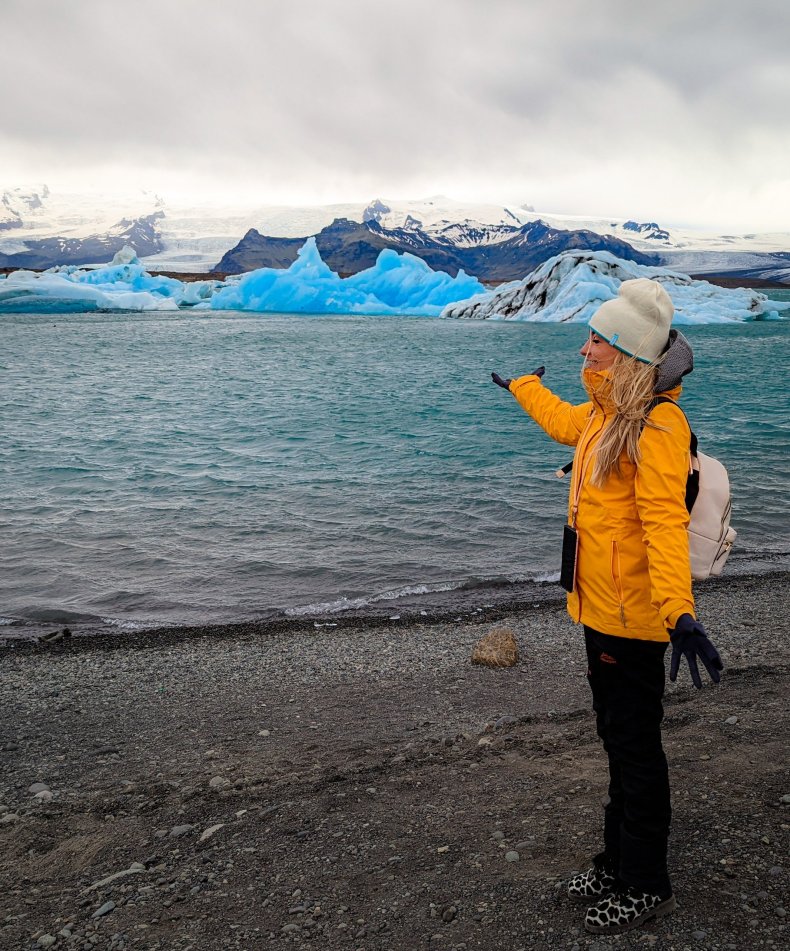

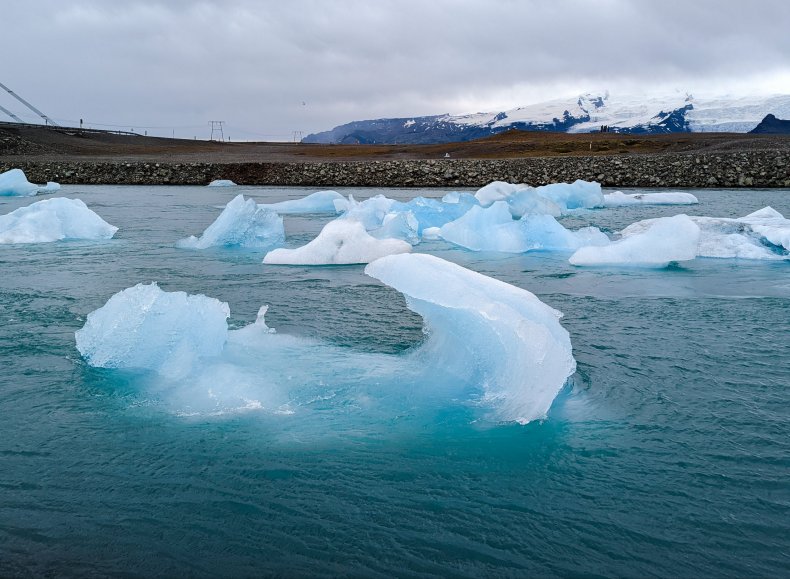
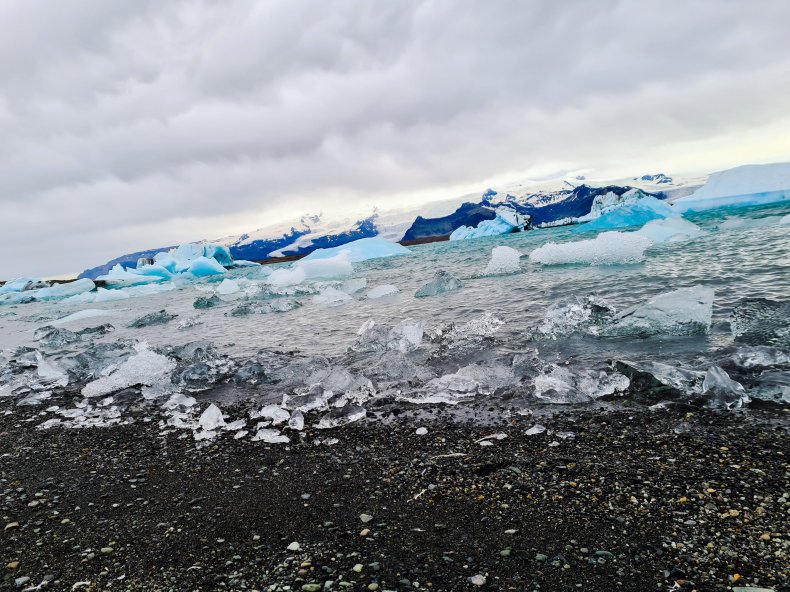
A few steps from the lagoon is Diamond Beach. On this beach, the icebergs that fill the Jökulsárlón glacier lagoon wash ashore, creating a stark contrast to the black volcanic sand. Water erosion carves the large blocks of ice like diamonds, polishing them and bringing out different shades of color, from the most transparent to blue and green. Each day offers different hues and reflections, so each experience is unique. If you’re lucky, you might even see seals leaping into the icy waters. This beautiful spectacle makes this a favorite spot for many photographers.
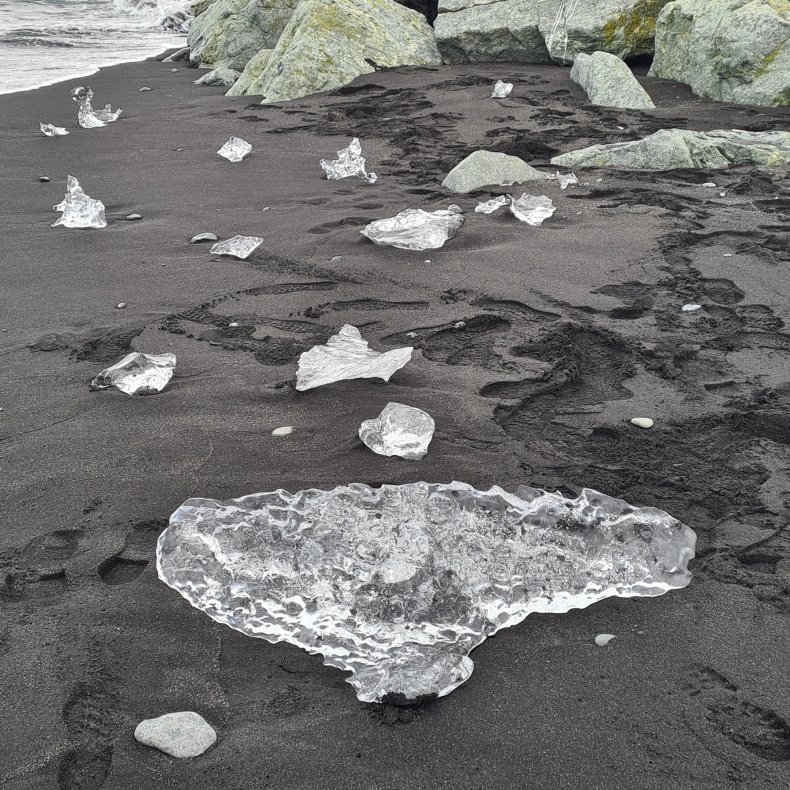
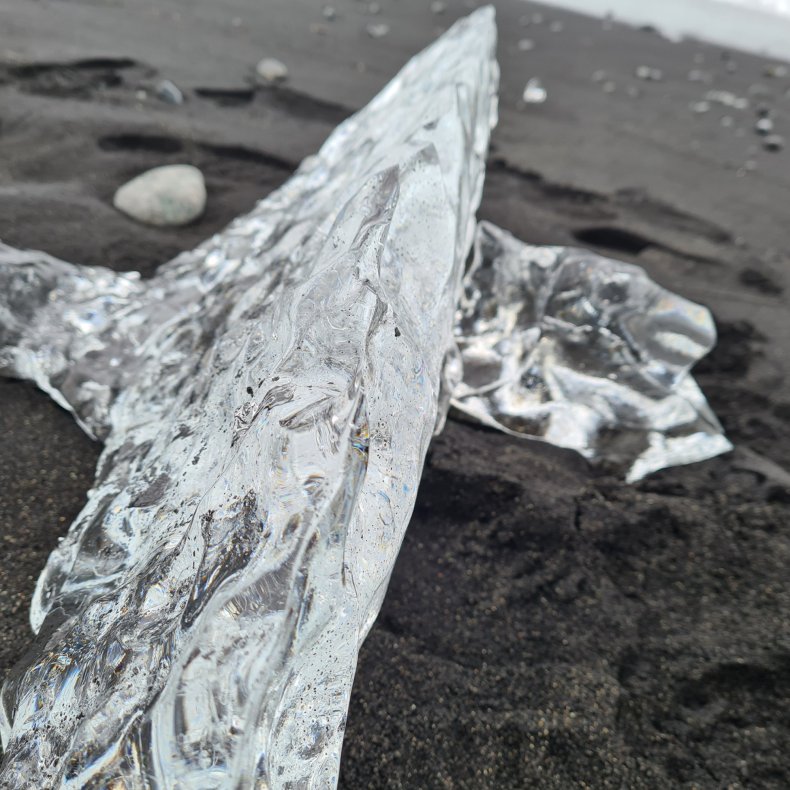
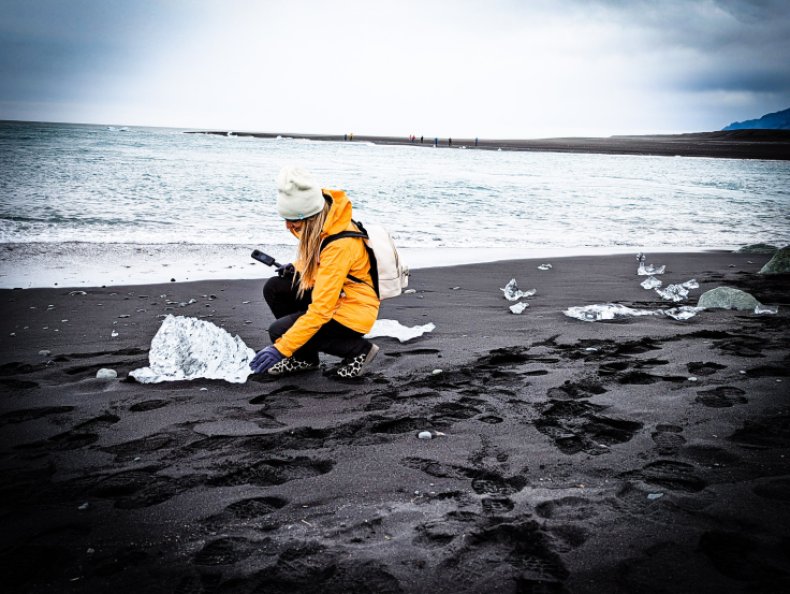
We reluctantly left this miracle of nature to make our way to the ferry departure point (Landeyjahöfn) to the island of Vestmannaeyjar. Unfortunately, we didn’t stop at Svartifoss waterfall, opting for a longer lunch in Vik before boarding the ferry.

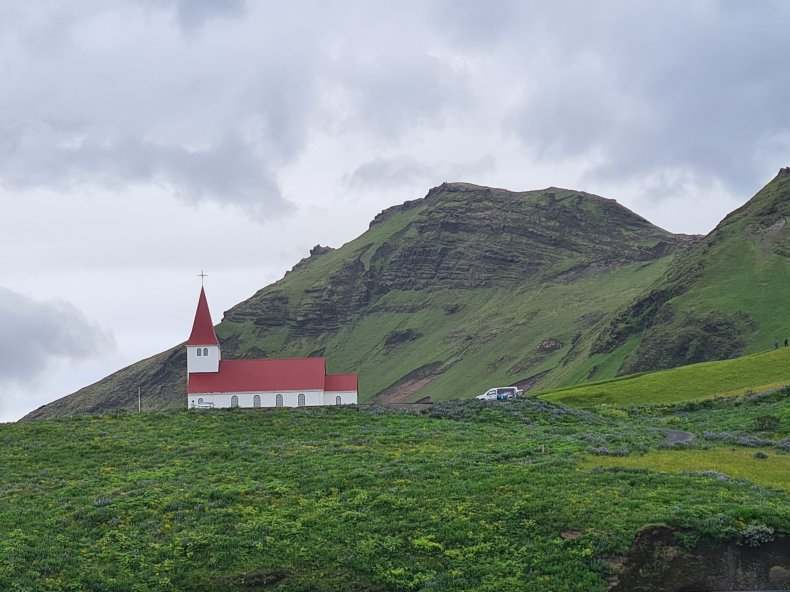
The island of Vestmannaeyjar is Iceland’s best kept secret 😉 The archipelago has been a UNESCO World Heritage Site since 2008. If you’re a nature and wildlife lover, this is a place you shouldn’t miss! You can explore the island on a day trip even from Reykjavík, as you can also arrive by plane. But if you like hiking, it’s best to opt for an overnight stay. Another way to get to the island is by ferry. The ride takes 30-40 minutes and gives you a fantastic view of the cliffs. Tickets for the ferry can be purchased online and I recommend getting them early as places are limited. We recommend arriving 30 minutes before the ferry departure time.
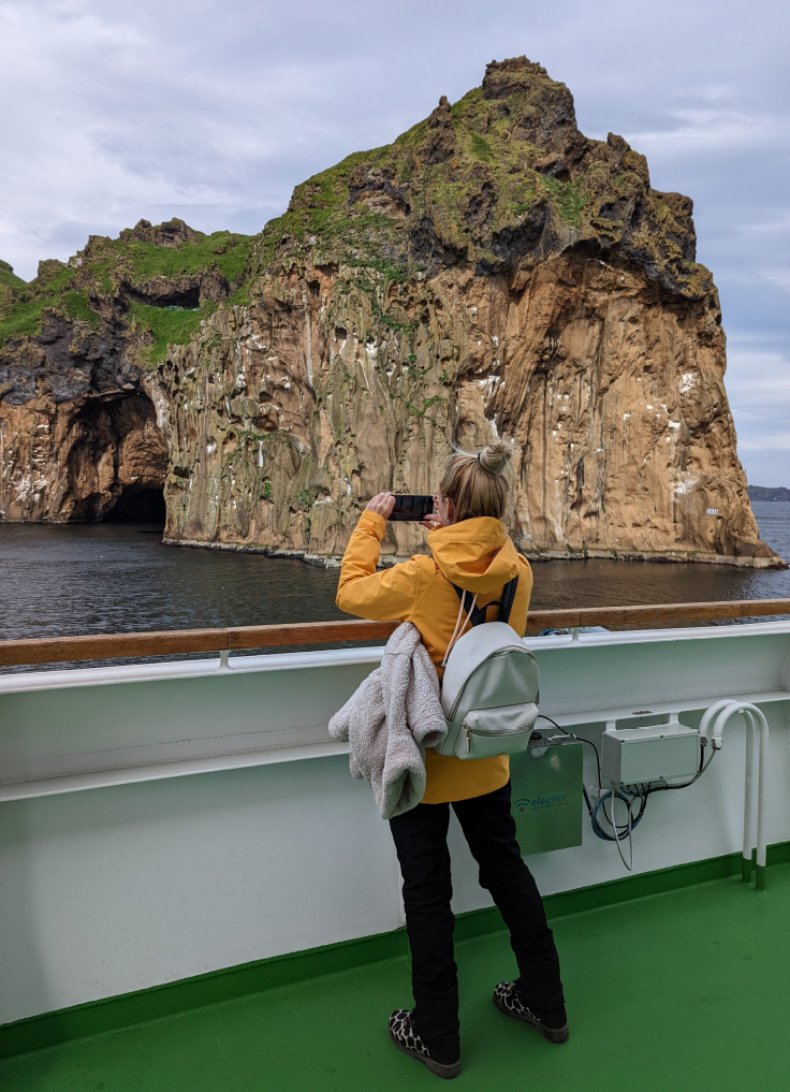
The largest island of the archipelago is called Heimaey. It is the only inhabited island and has a population of 4,200 people. Despite being relatively small (only 13.4 km2), Heimaey has a lot to offer. From the unique landscape of volcanic formations, cliffs and caves that are home to the largest colony of Atlantic puffins in the world, to the special gastronomy. Unusual foods include smoked puffin, whale and reindeer meat. I recommend you indulge your taste buds at both the Einsi kaldi, and Tanginn restaurants.
Once on the island, after checking in, we set off slowly to explore the island and stopped first to check out the Glamping & Camping, campsite, which you can stay at, if you don’t mind not having a shower and toilet in your room, cause they’re shared a few meters away.
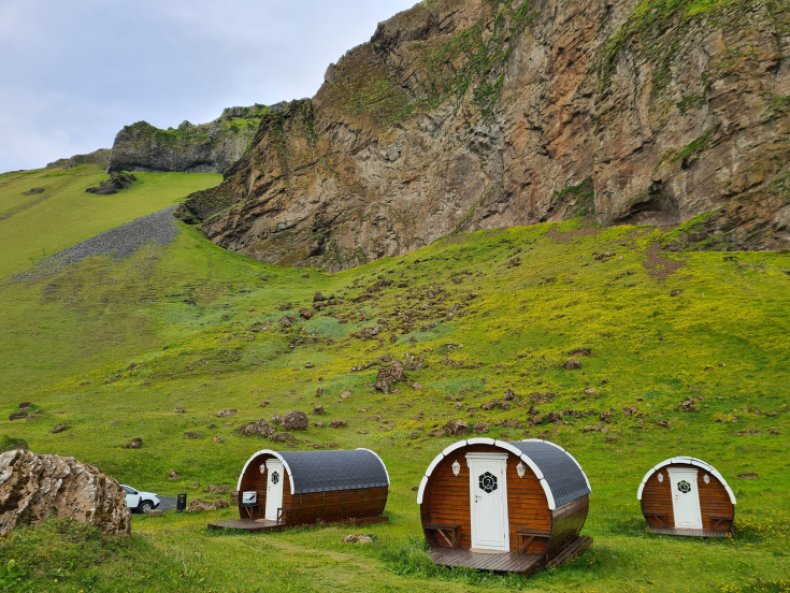
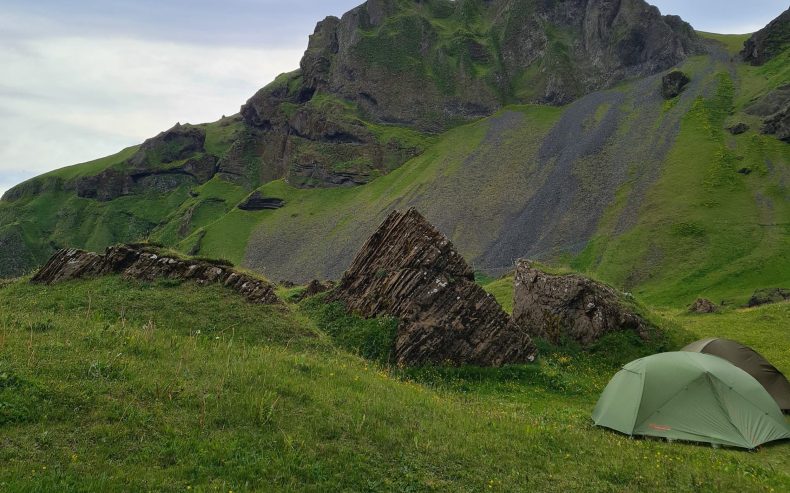
Right next to this campsite is a golf course and the famous Elefant Rock – Halldórsskora. From here it’s only a few minutes to Urðaviti Lighthouse, which gives you the chance to stand on the side of the Eldfell volcano. I also recommend stopping at the Scenic Overlook for a fantastic view.
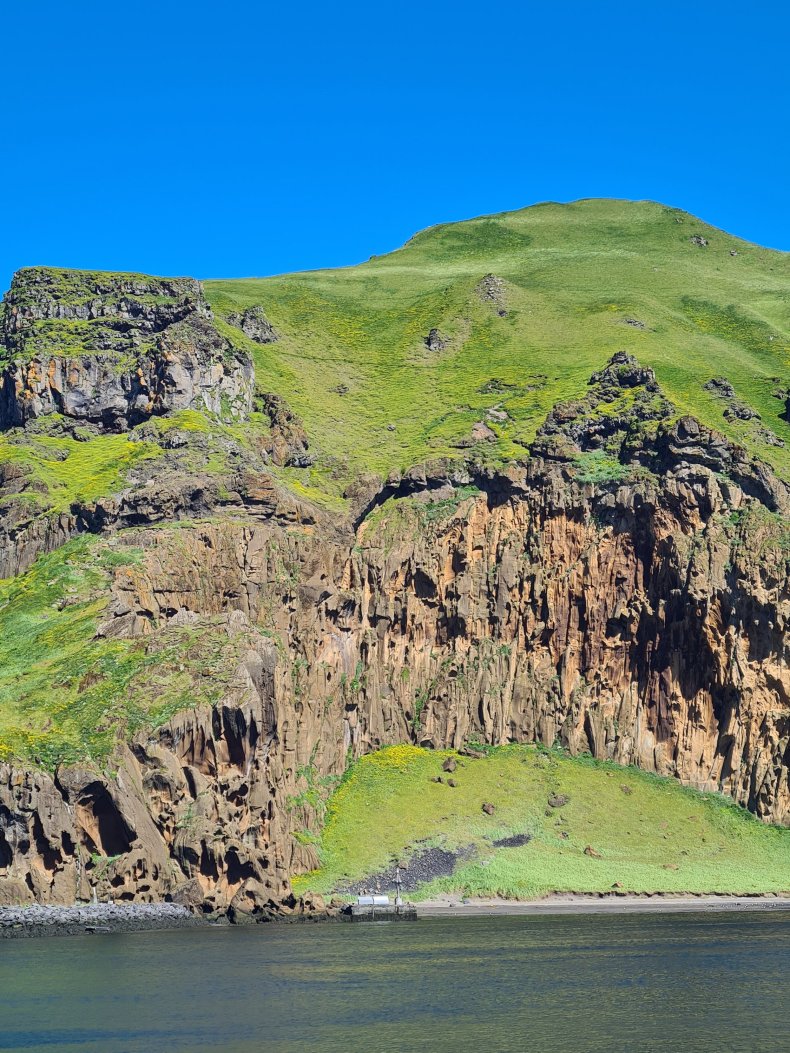
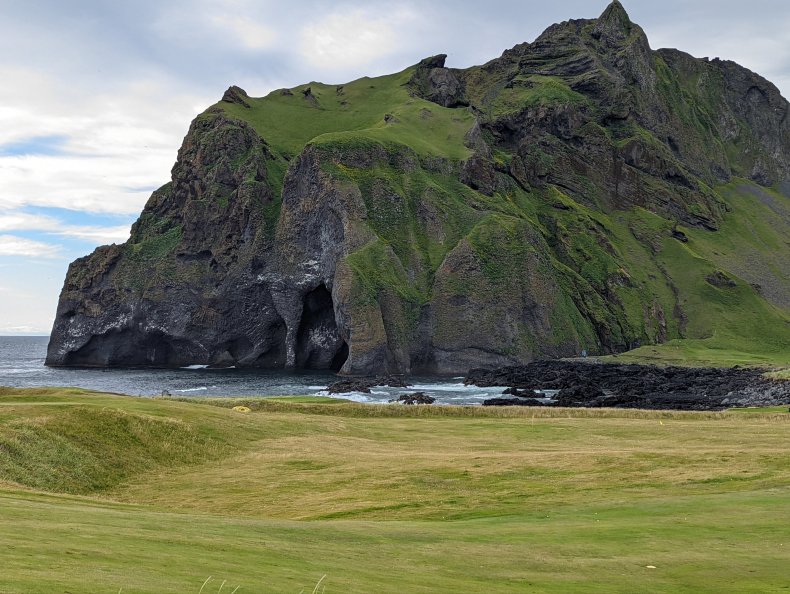
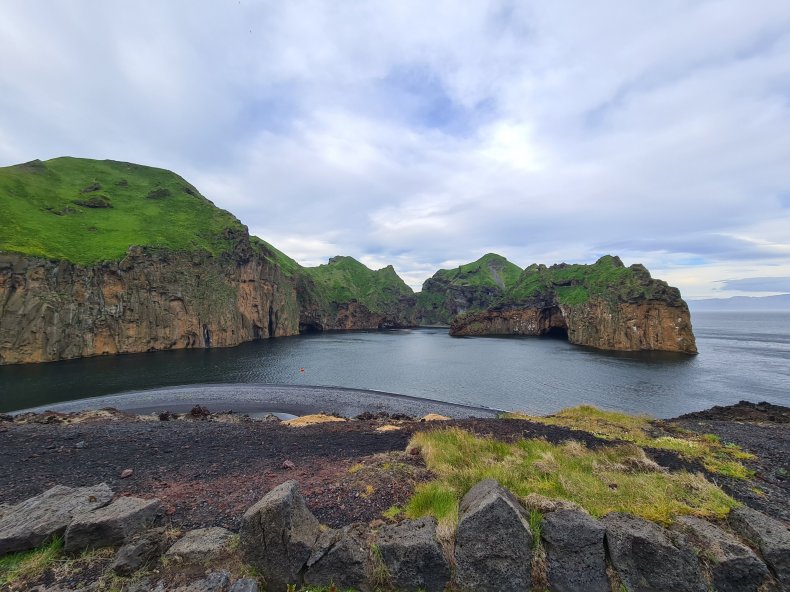
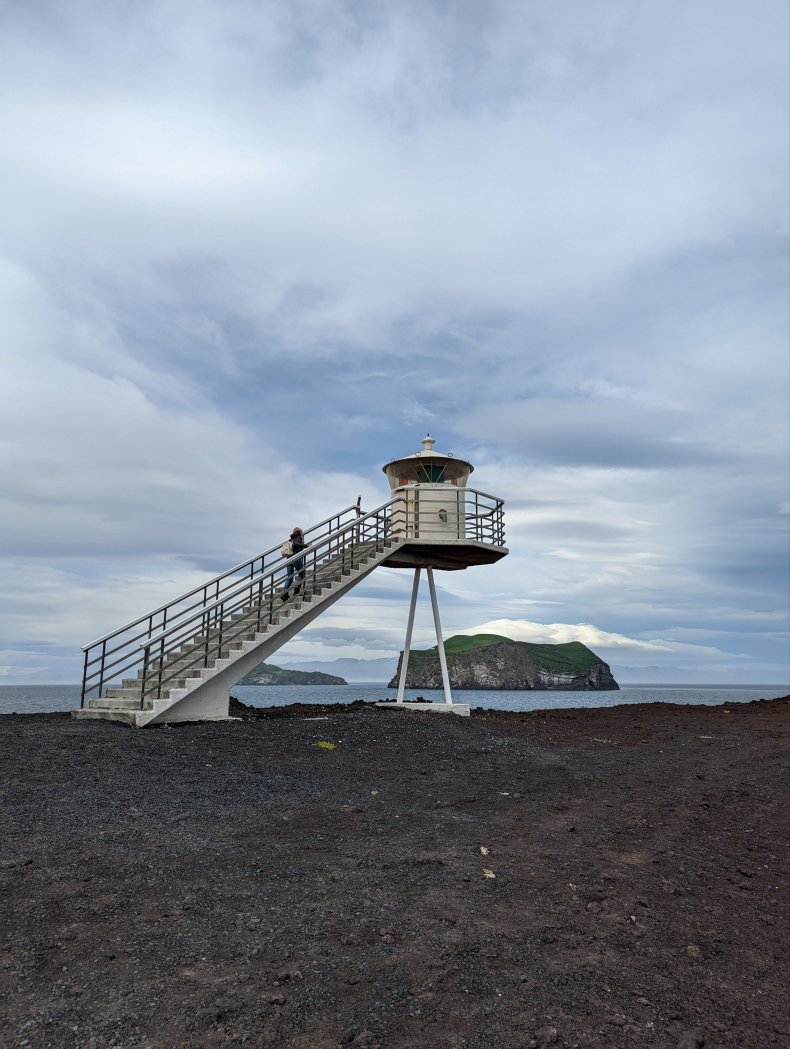

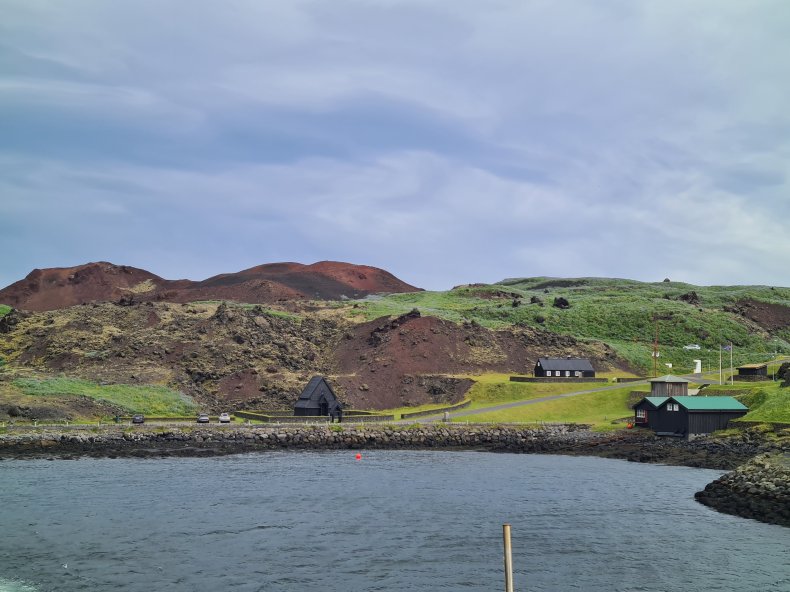
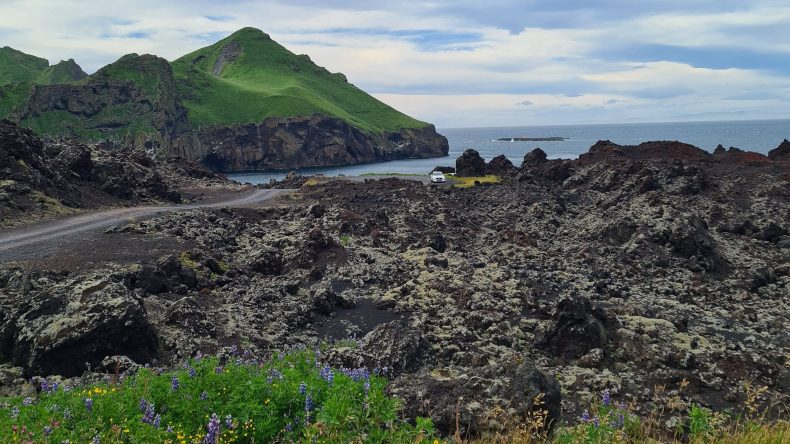
For dinner we chose Einsi kaldi, restaurant, where it’s best that you try the 3-course menu. It’s delicious!
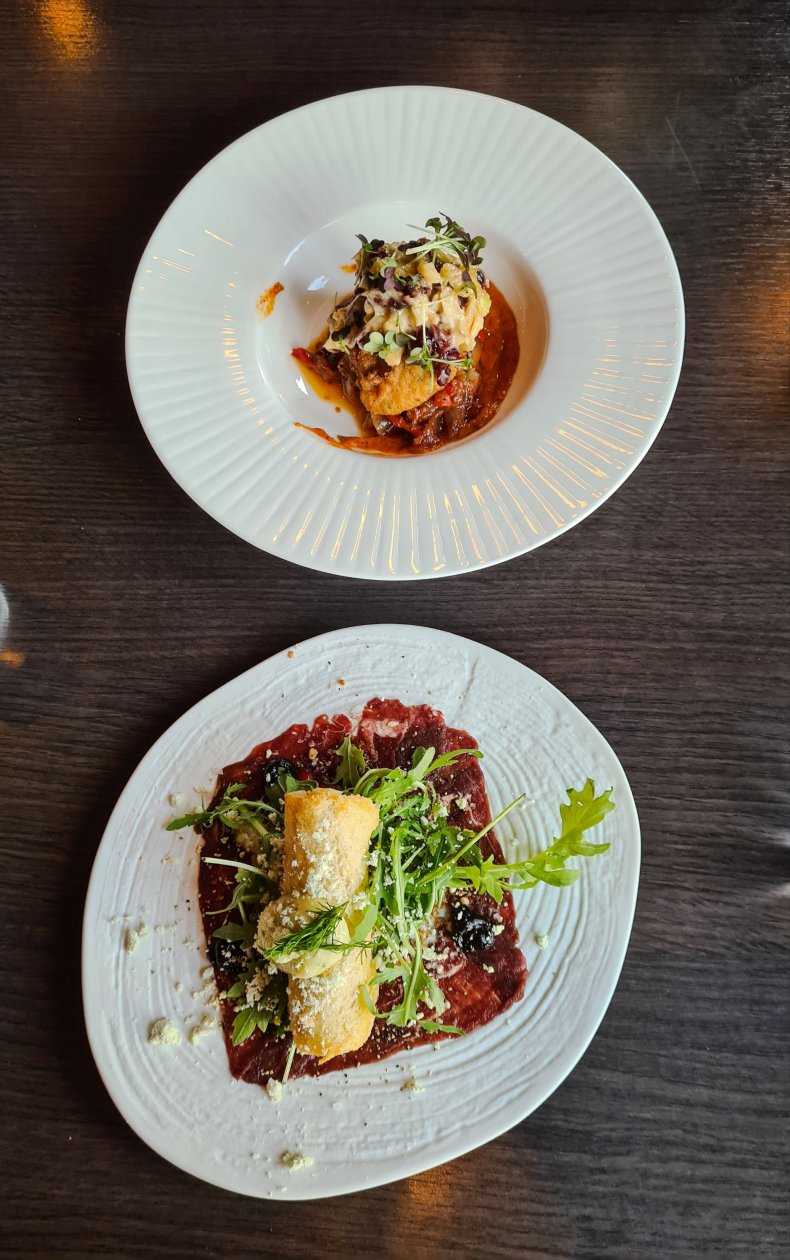
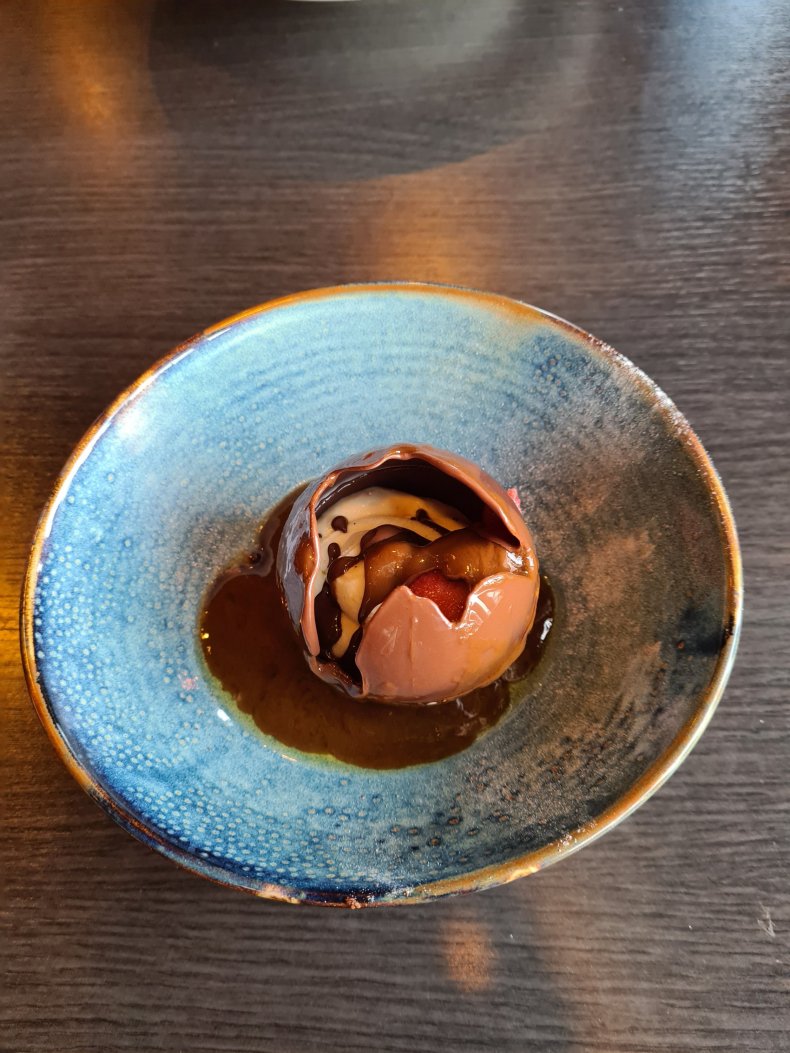
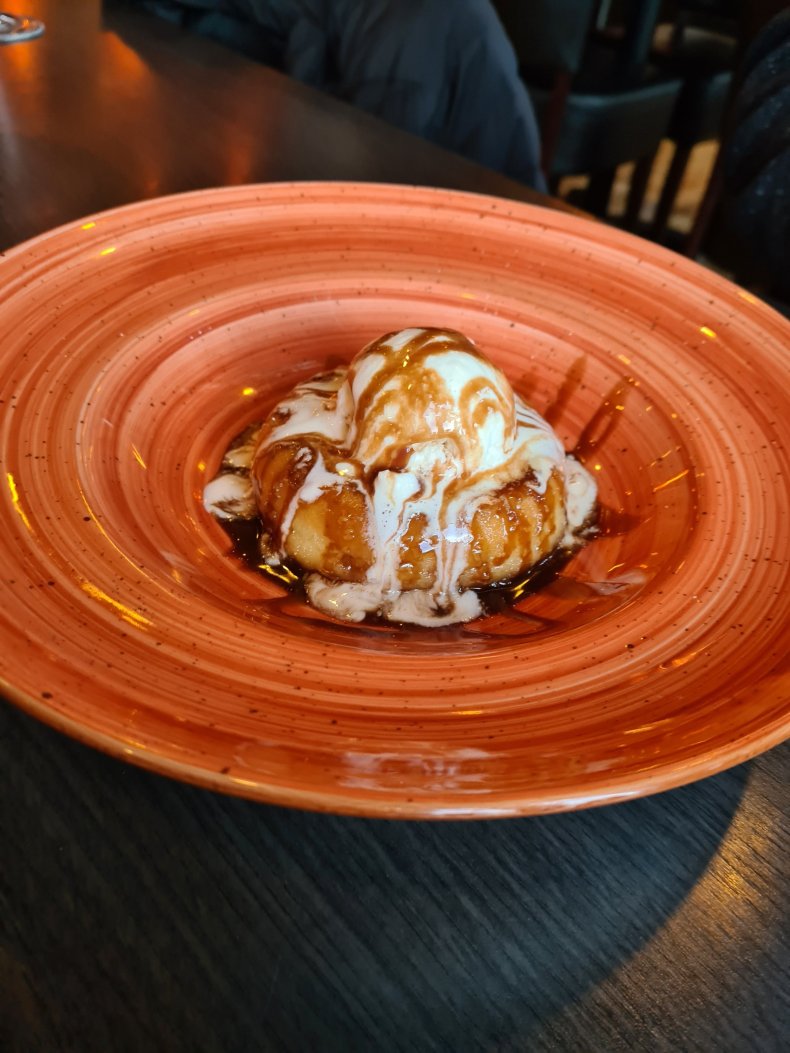
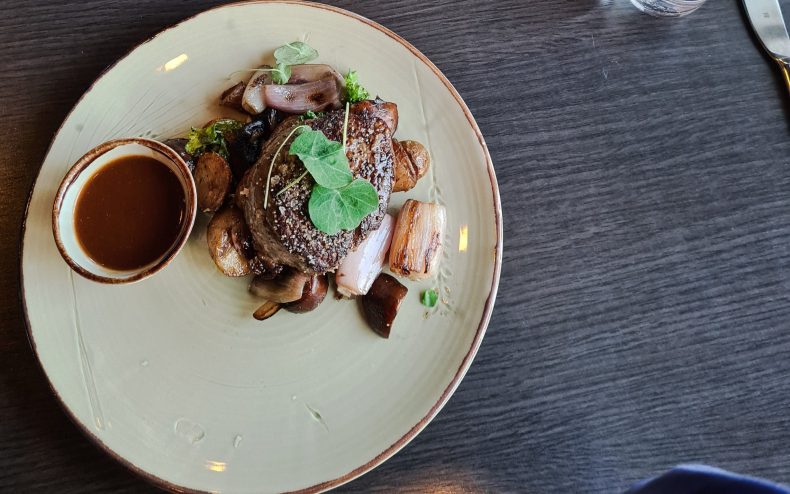
Day 4

If you like hiking and don’t mind heights, you’ll want to get to the top of Heimaklettur, which means ‘home rock’. The hike is only recommended when the weather is good and is a bit dangerous, especially in the first part, where there are some steep stairs and chains. This place was created by a subglacial eruption 13,000 years ago and is the oldest part of Heimaey Island. And at 283 meters (928 feet) it is the highest point in the Westmannaeyjar archipelago. From the summit you can see stunning views of the surrounding Heimaey, the archipelago and the mainland with the infamous Eyjafjallajökull volcano.
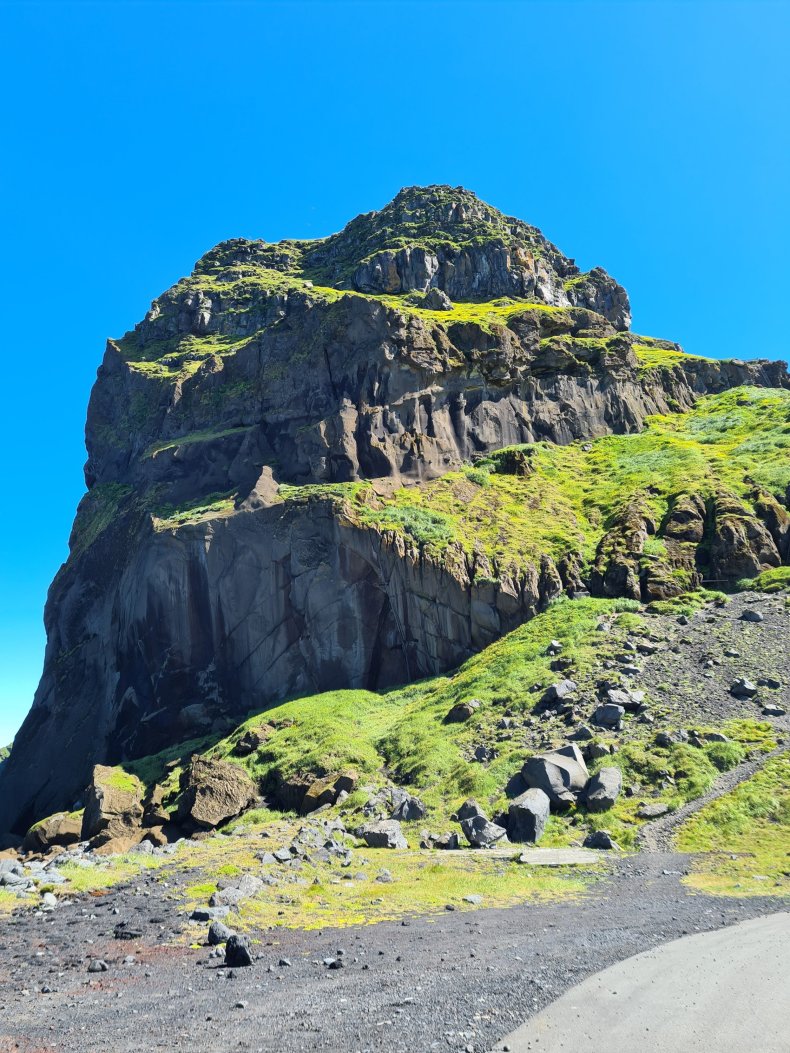
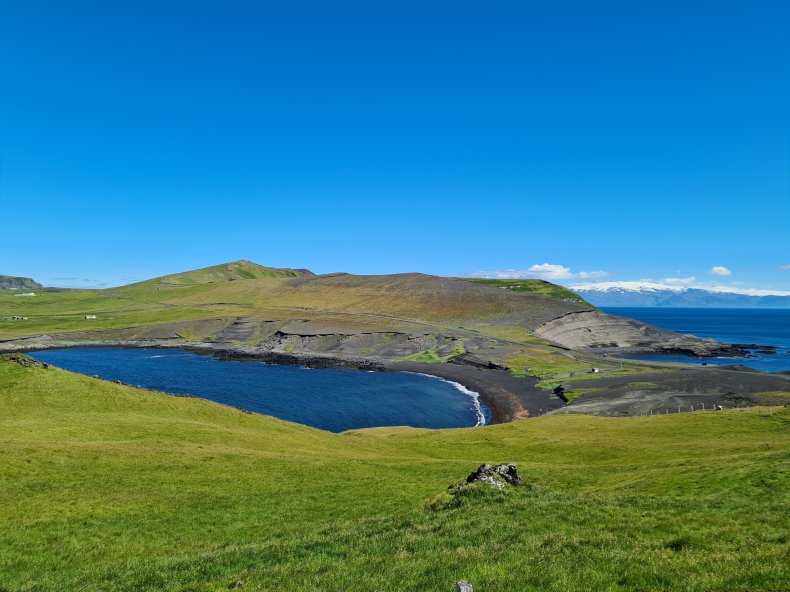
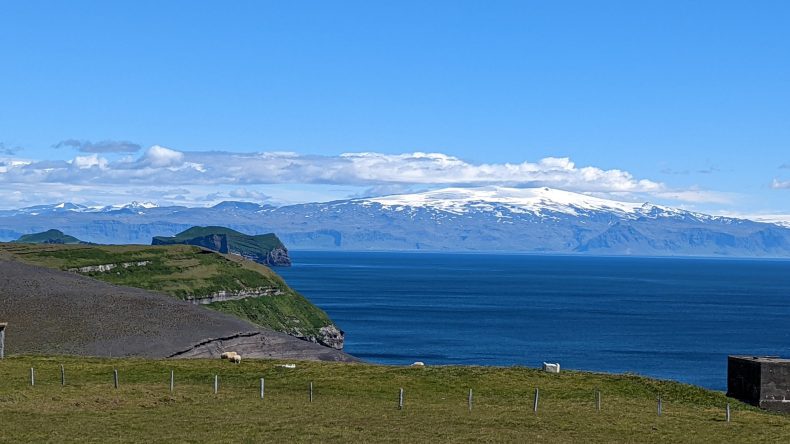

To see the beautiful puffin birds we stopped at Puffin Lookout and then headed to the harbor for lunch at Tanginn restaurant, where we tried whale meat for the first time.
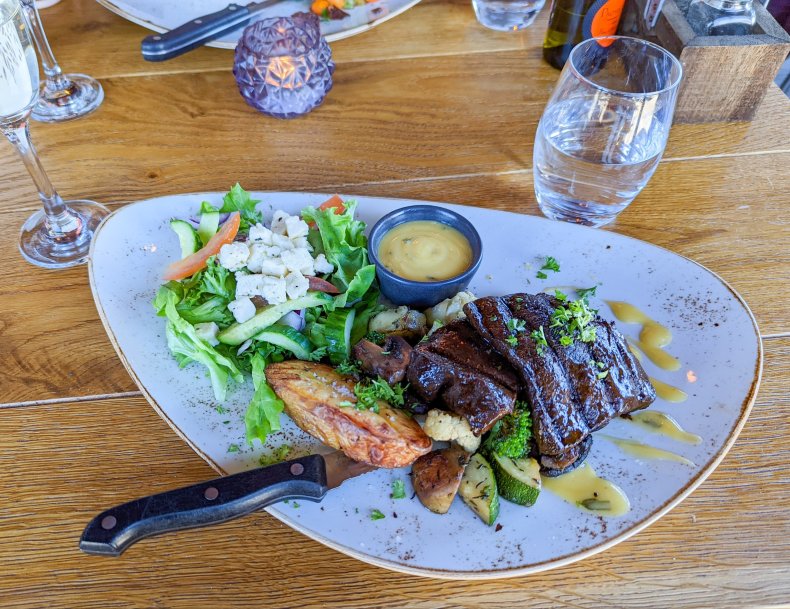
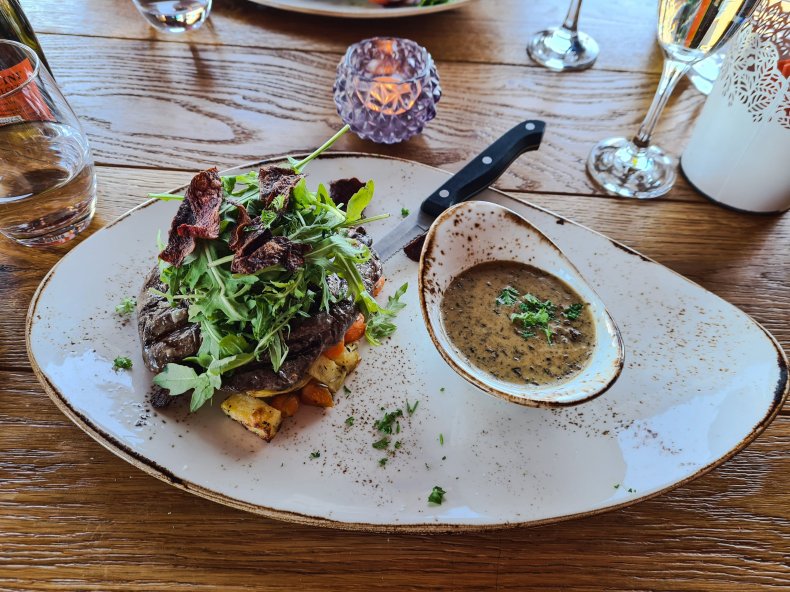
The trip was coming to an end, but not before making one last stop at Seljalandsfoss, waterfall, which is just a few minutes away by ferry.
Seljalandsfoss is a special waterfall because it gives you the opportunity to walk behind its curtain of water through a slippery but safe path. In this case, waterproof clothing is almost essential, as the water from the waterfall can splash up to several meters away. This was one of the reasons I did some shopping before this holiday that wasn’t in the plan (more details I’ll leave you here).
When you’re behind the waterfall, you realize just how big it is and can take some remarkable photos. We were lucky enough to have a sunny day and were able to see the rainbow in all its glory.

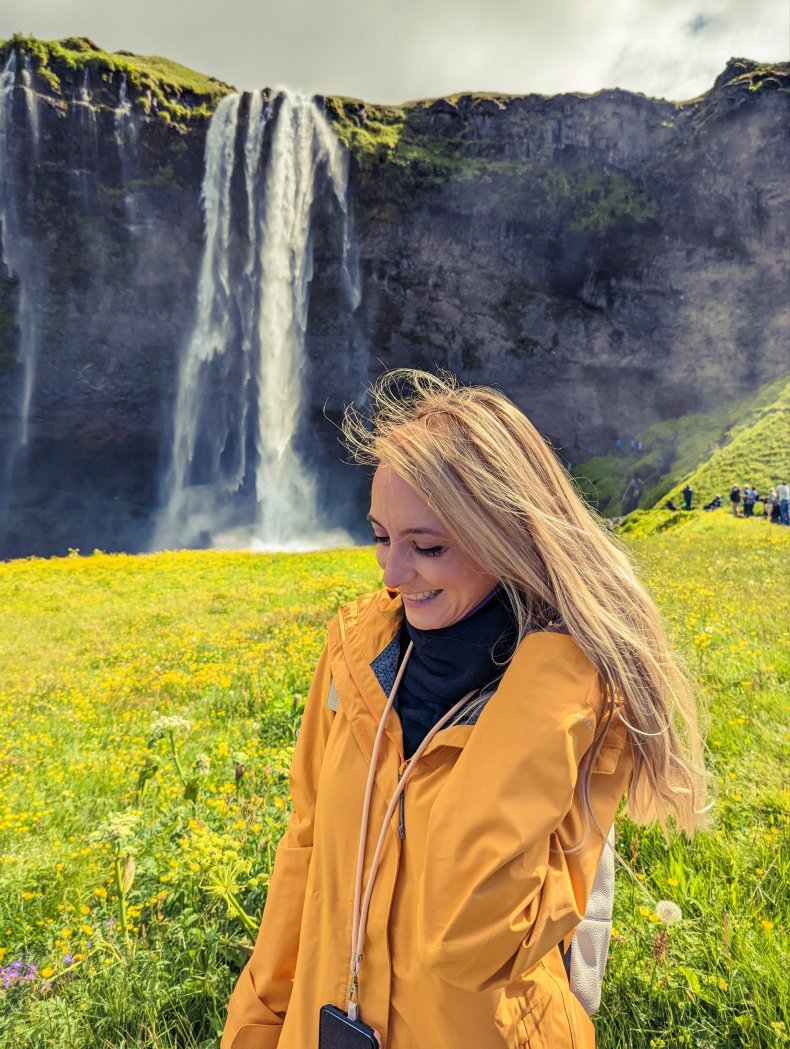

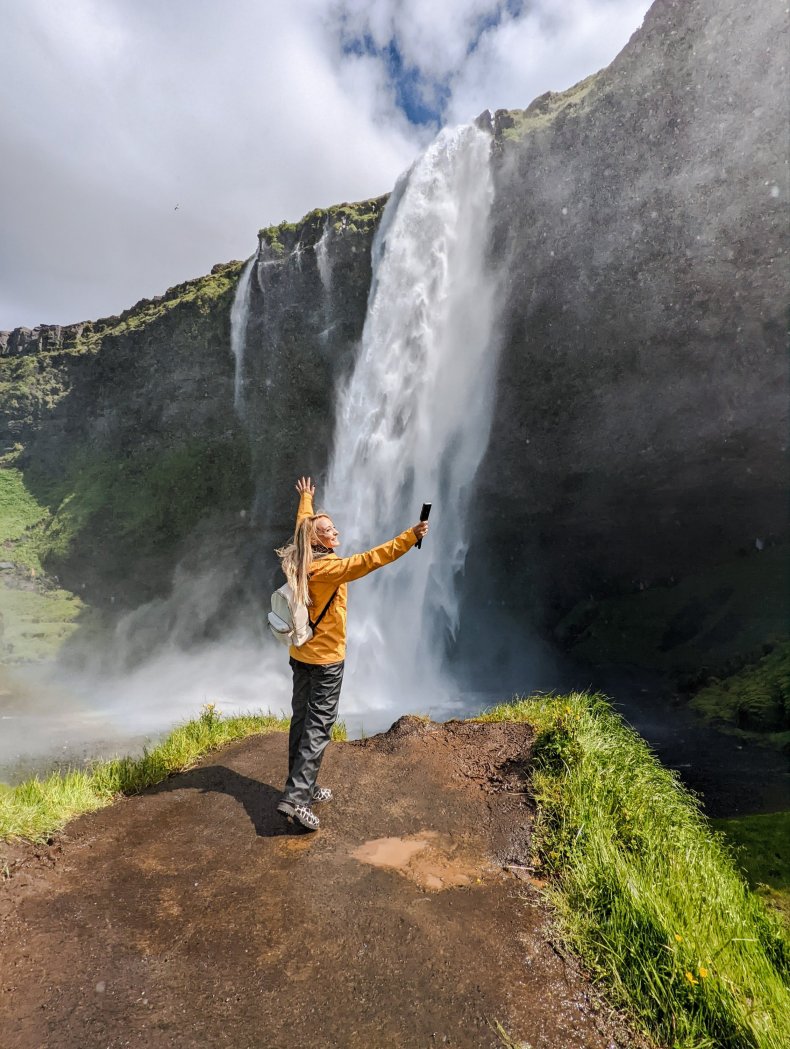
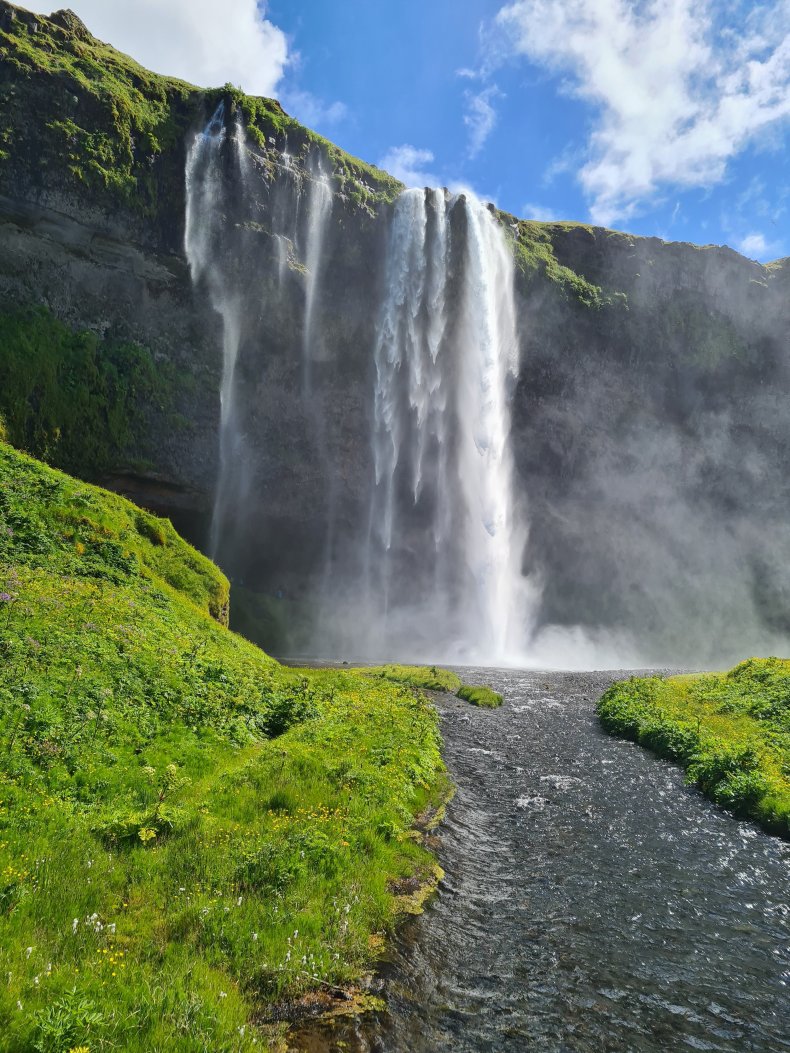
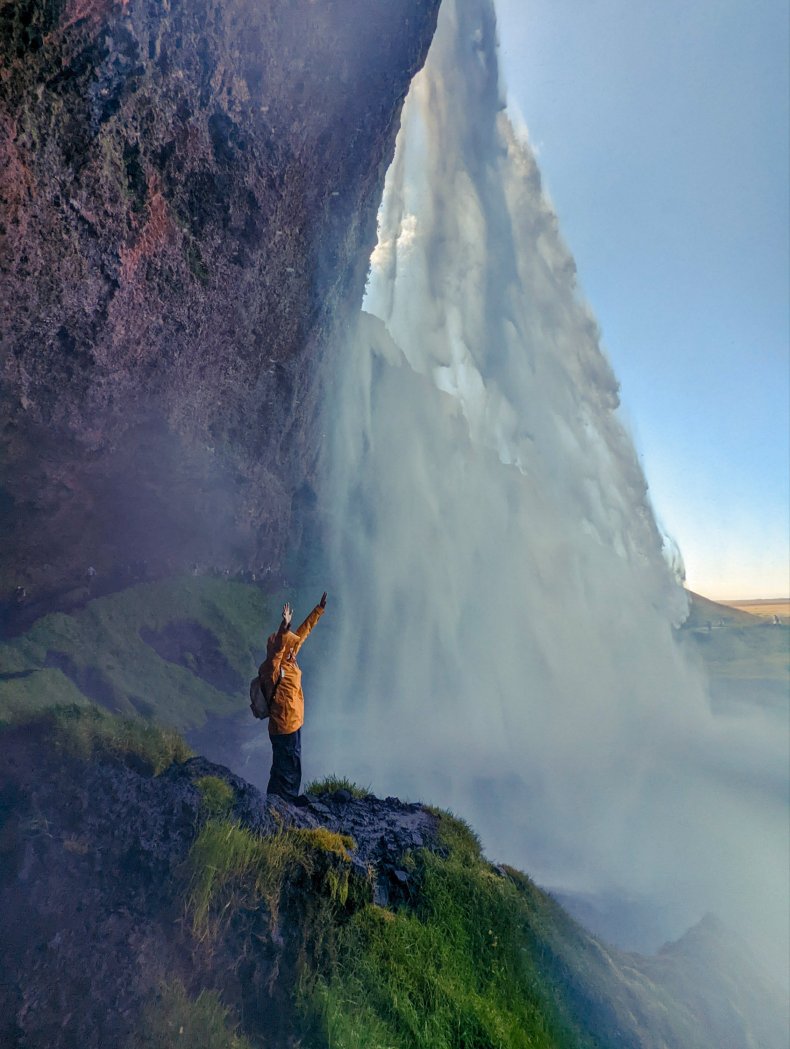
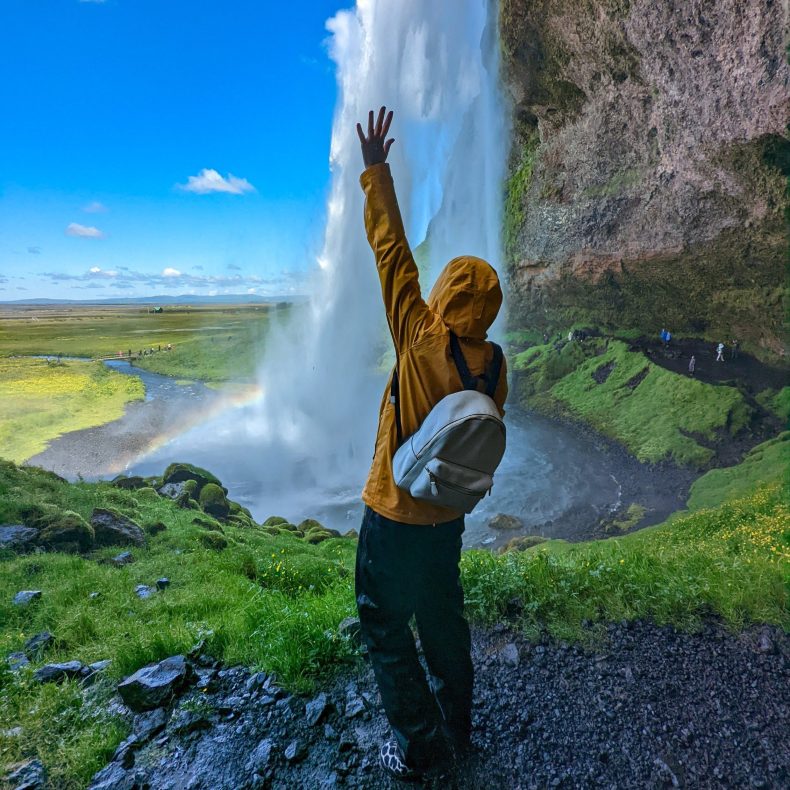
We left for the airport feeling sorry that we didn’t spend more time in this incredible land, but with the promise that we will be back!
What do you say? Are you adding Iceland to your bucket list?
If you’ve already visited Iceland, feel free to leave other ideas for routes or points of interest in the comments.
Thank you, and to many more unforgettable experiences!


